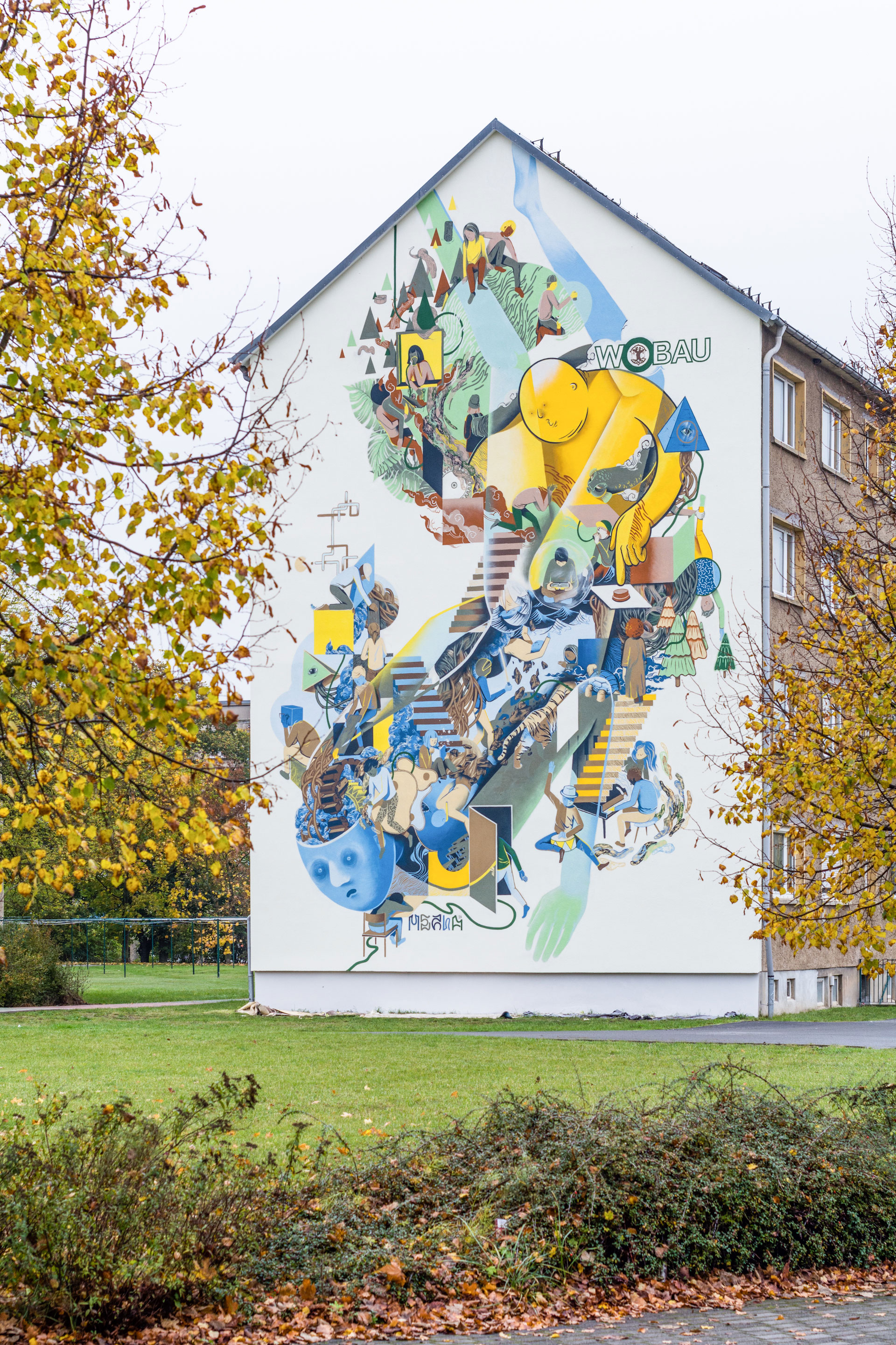Portfolio Marius Förster
Market & Morals
BA-Project, Visual Systems, University of the Arts 2013/14
How we live, think and act depends on our conviction. Events like the economic crisis, the european crisis, the arab spring, Fukushima, the Green New Deal, NSA and so on, pose the question how we want to live? On what kind of believes or morals our behavior pattern is based on? The discrepancy between what we might know and the reality of drawn conclusions feels to be absurde. Are morals repressed to the privat space without any meaning for economic regards? What are the consequences of economism on the fields of political, social and ecological behavior and decision making? Many questions occur on the supposition that contemporary developments are decomposing the society: Have morals the potency of evoking a rethinking? Are morals a viable instrument to analyze economics outside an established rhetoric? How can I, as an designer, embrace my responsibility? How can my abilities put in charge of the visualization of injustice or to promote their decay? How we have to design a climate of a common good?
The book is a compendium of divers thoughts, theories, opinions, definitions and philosophical discourses, reflecting the topic from different perspectives. Beside this juxtapositions the book contains several galleries of press/ documentary and privat photography as well as artistic imagery. Those collages create new narratives, questioning contexts and correlations. How are pictures perceived in times of visual floods of aesthetics and information? How do they initiate or affect dialogues?
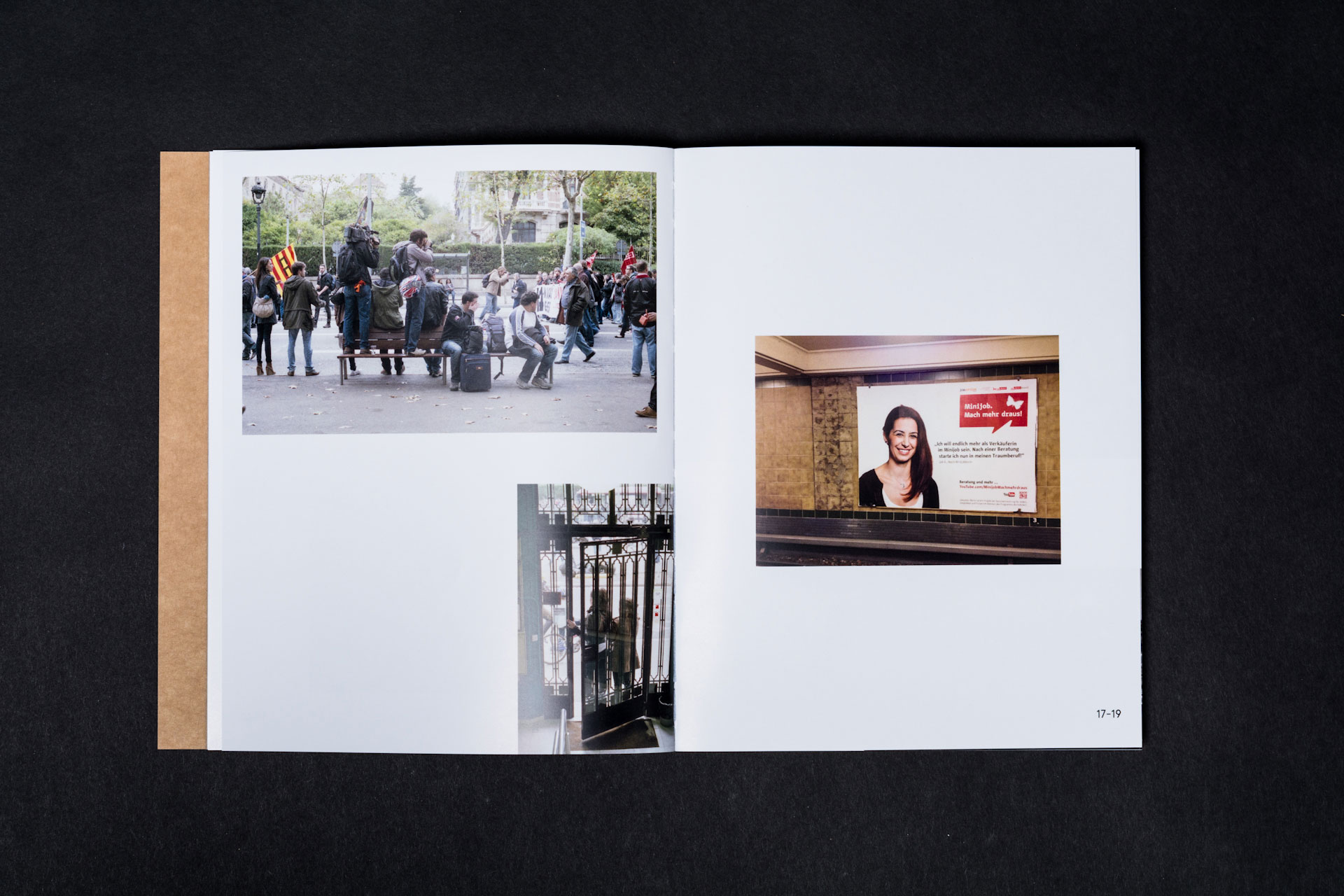
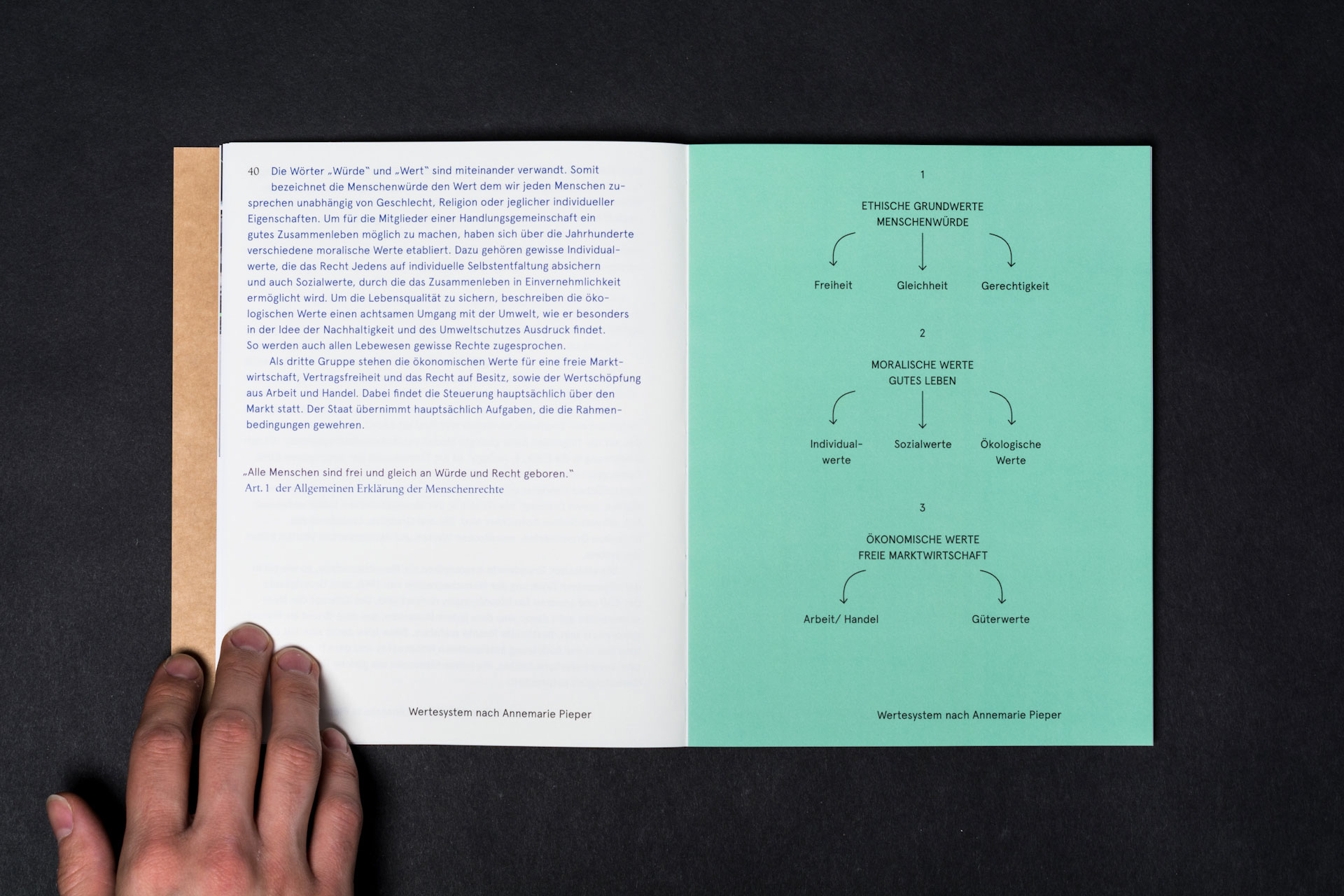
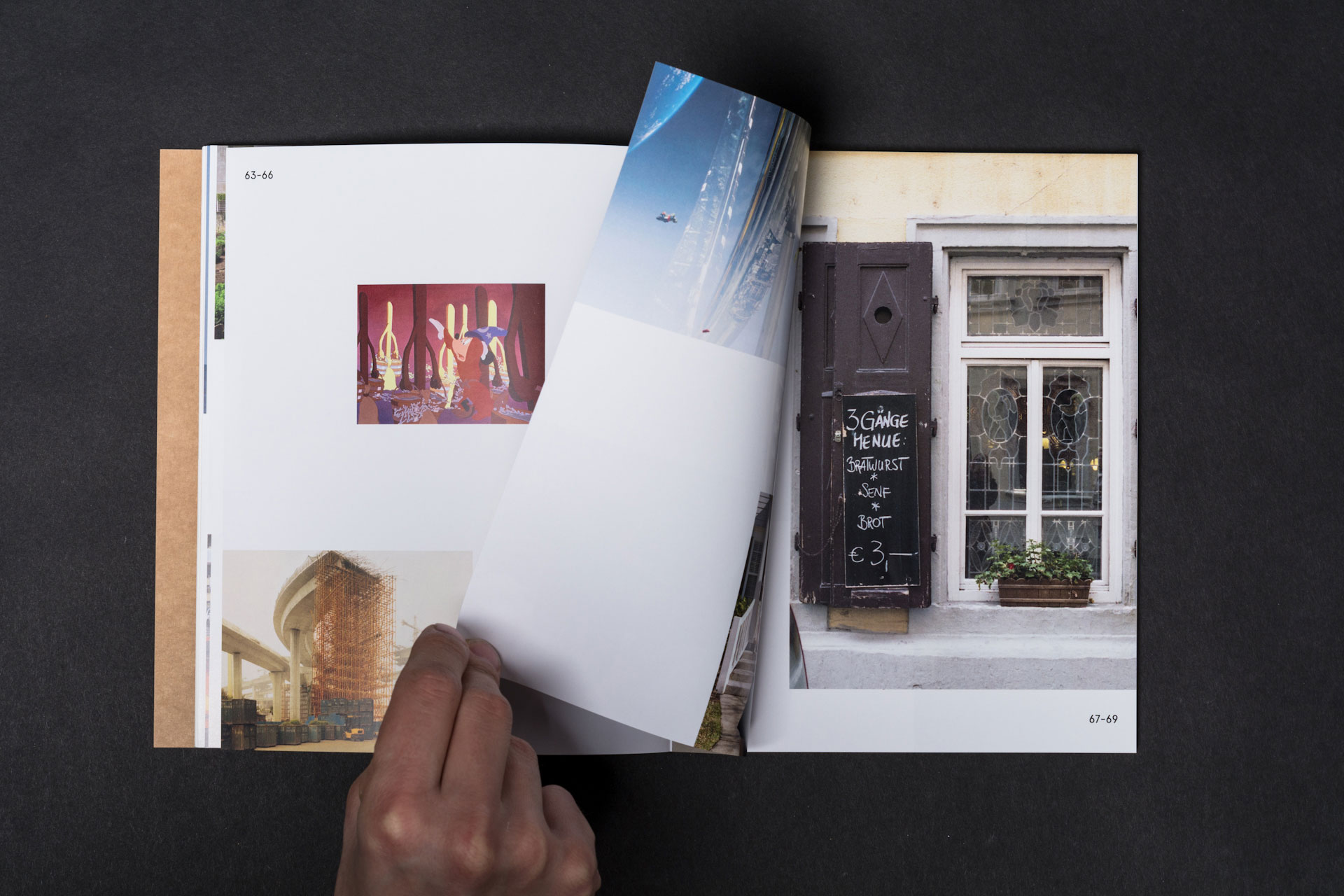
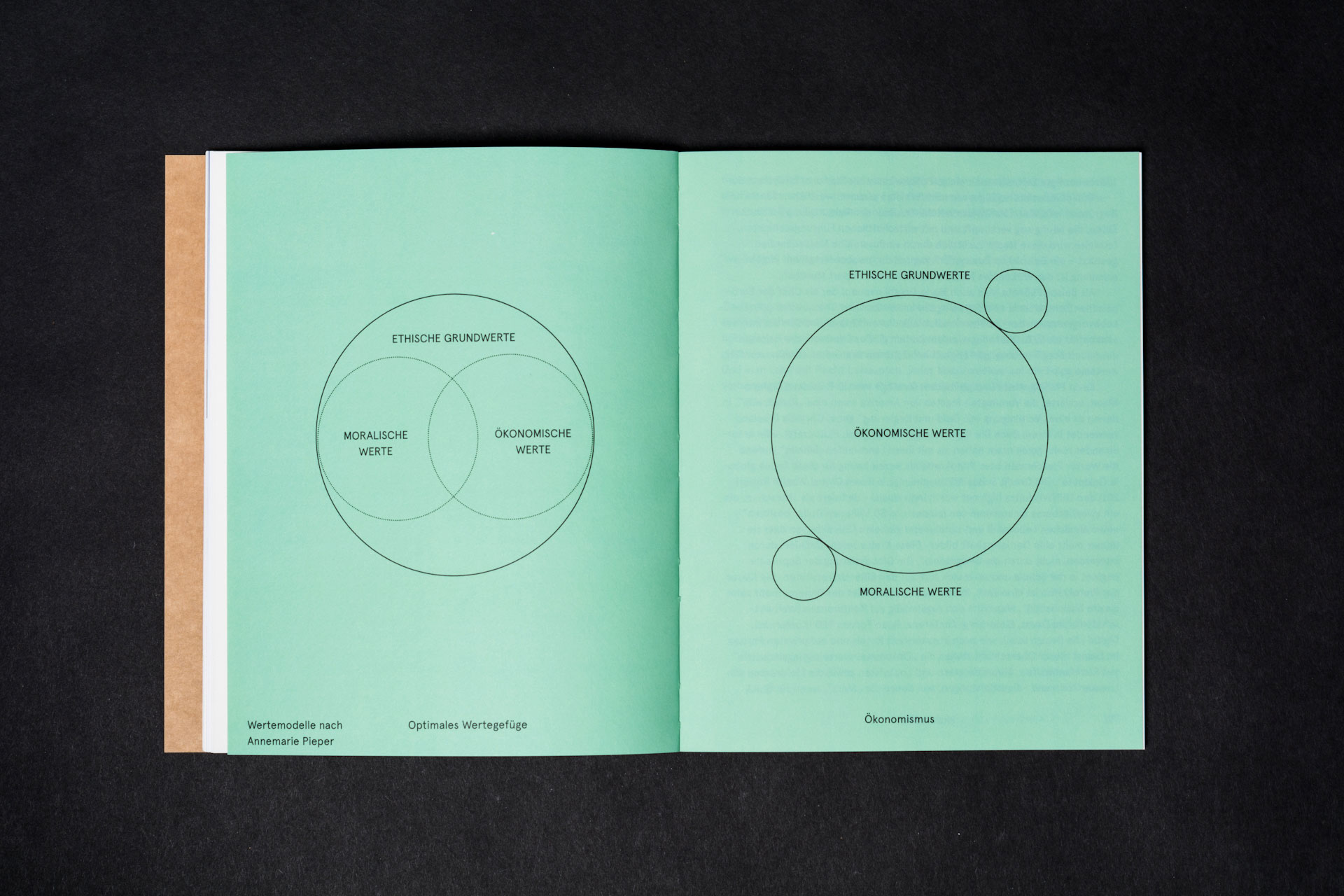
Through the installation apparent incompatible values collides and question the status quo. the allegories are a new interpretation of the seven virtues: justice, courage, wisdom, temperance, faith, hope and charity, inspired by the ideas of the think tank 30 (club of rome). Those virtues physically manipulate the money and thereby reinterpret its value. The installation tries to pose questions about the perception of values, regulating our society, as well as the possibility of critique.
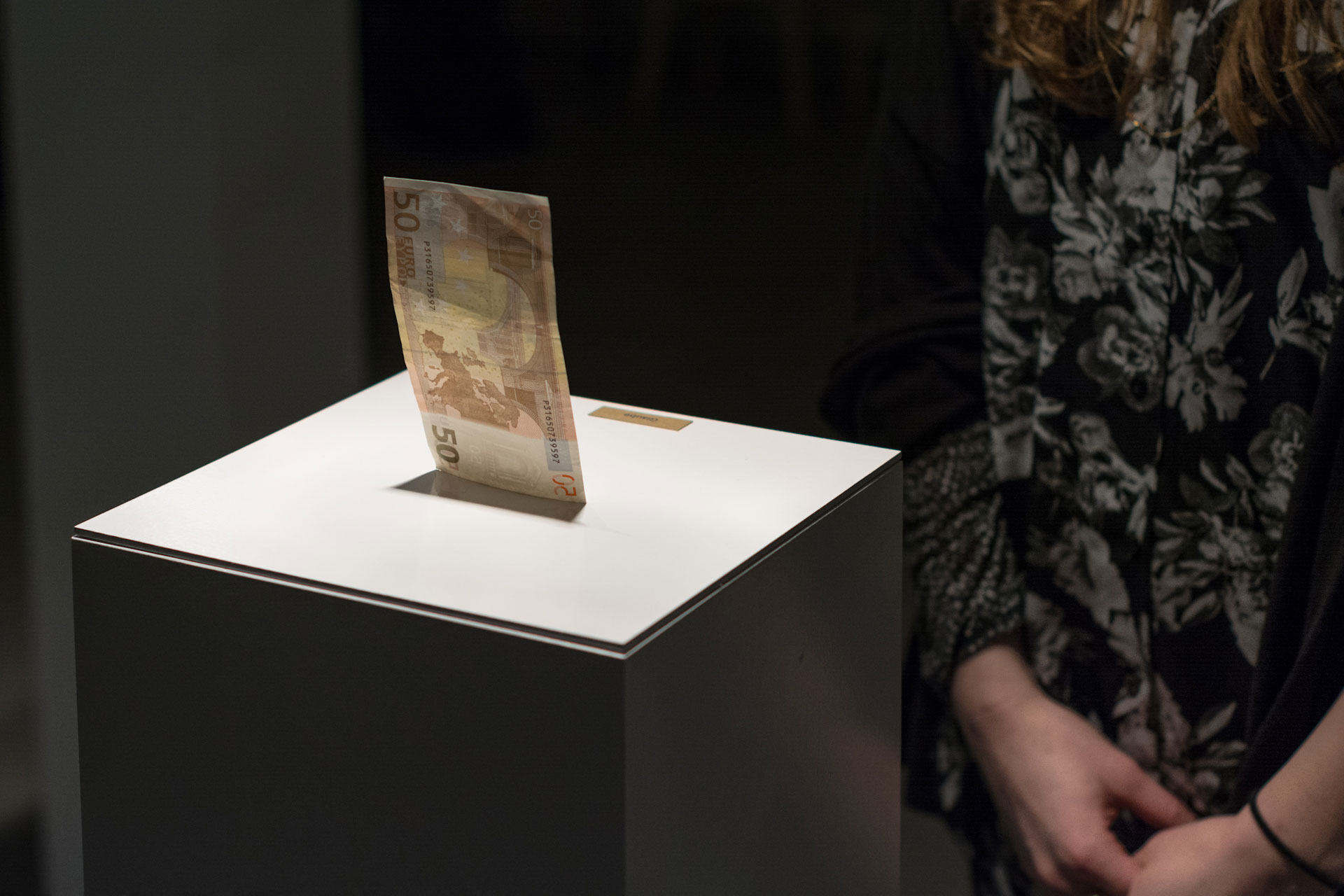
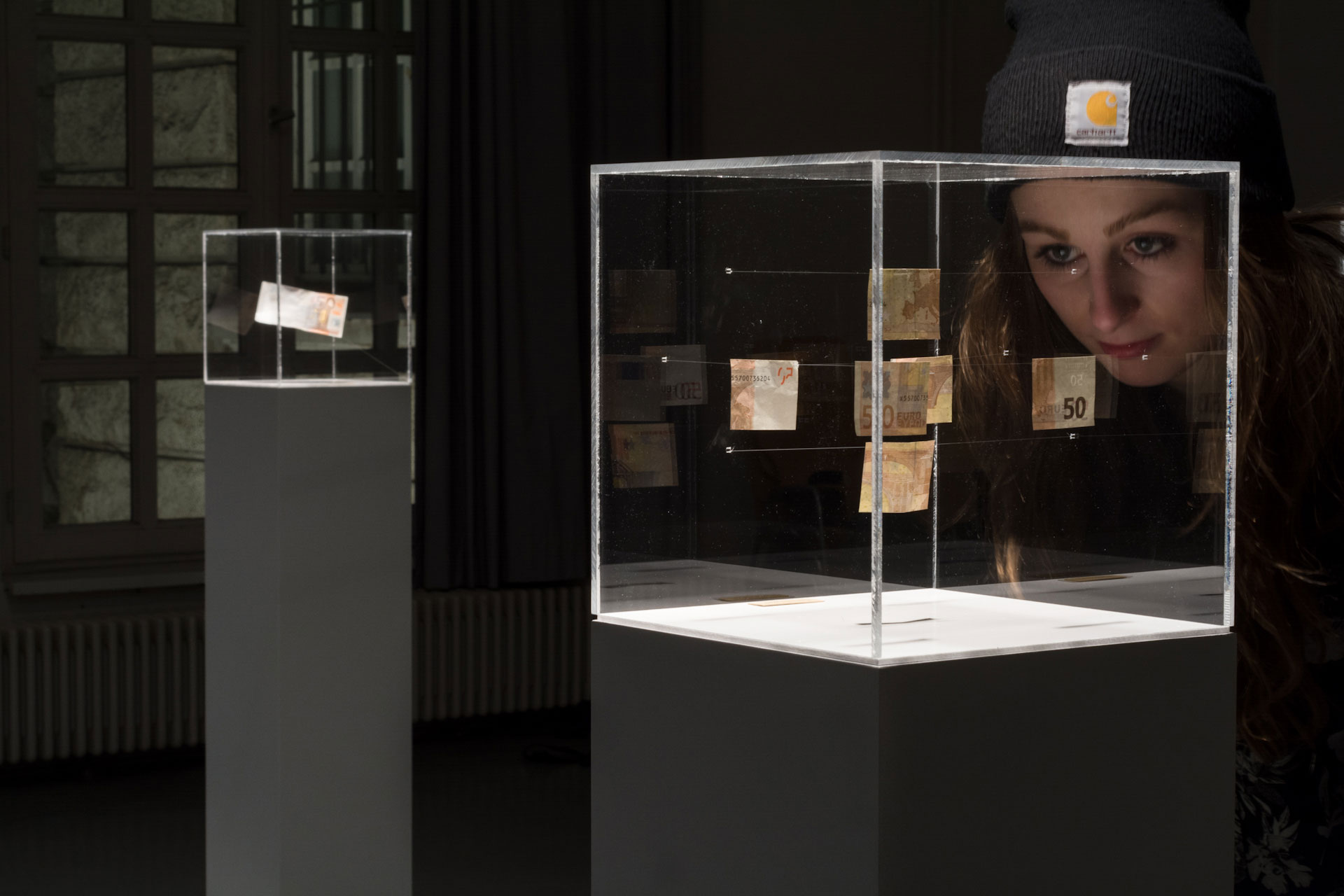

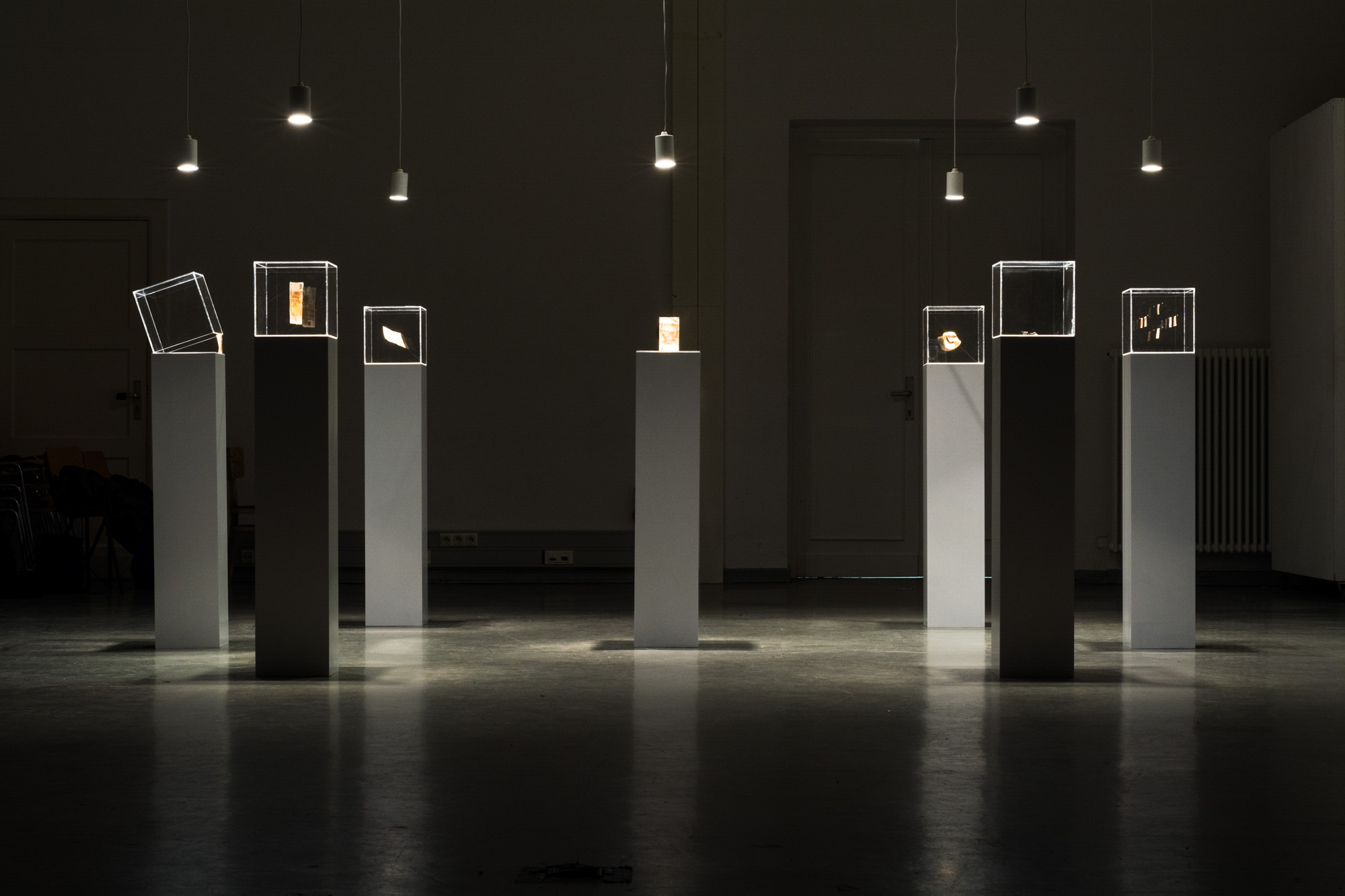
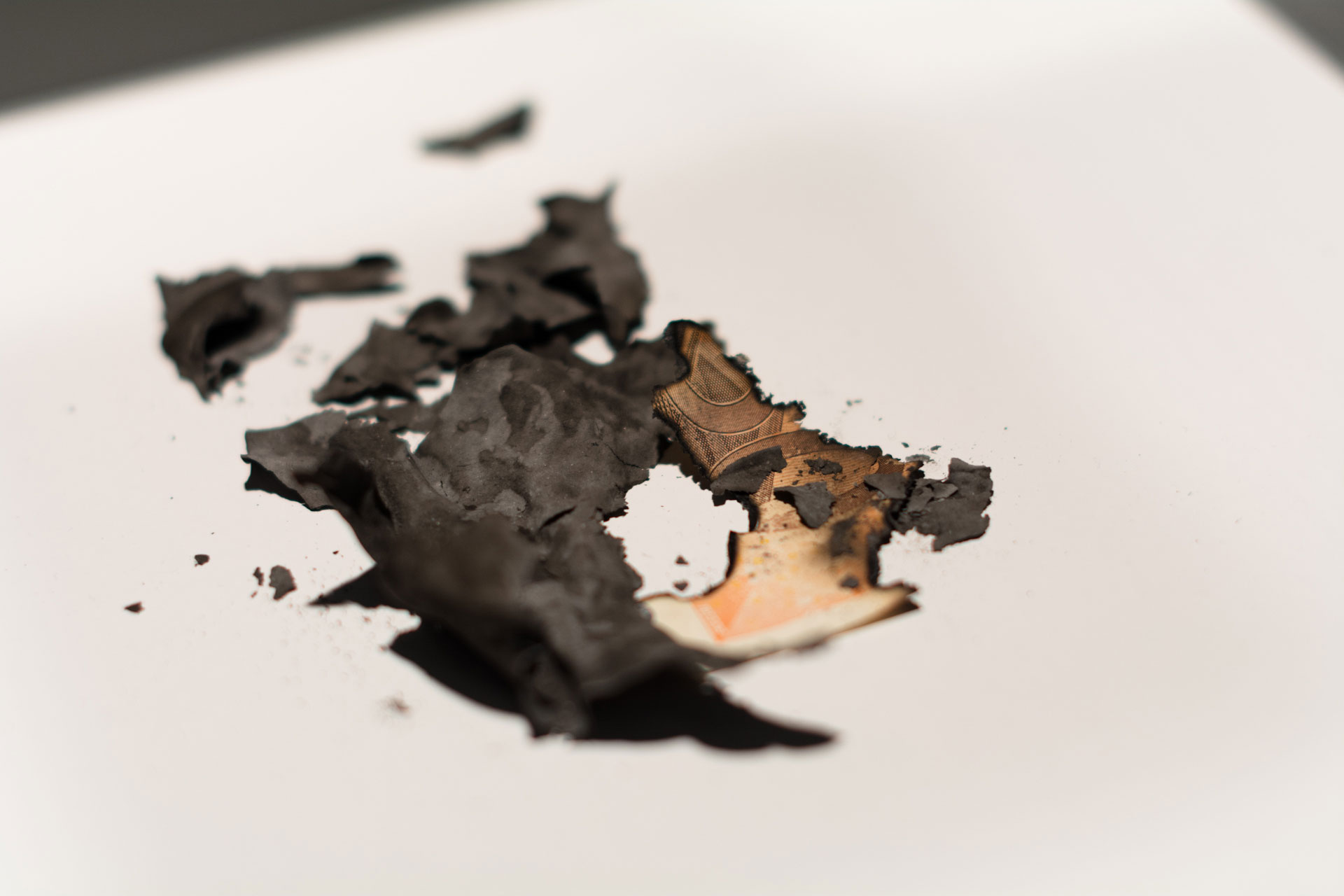
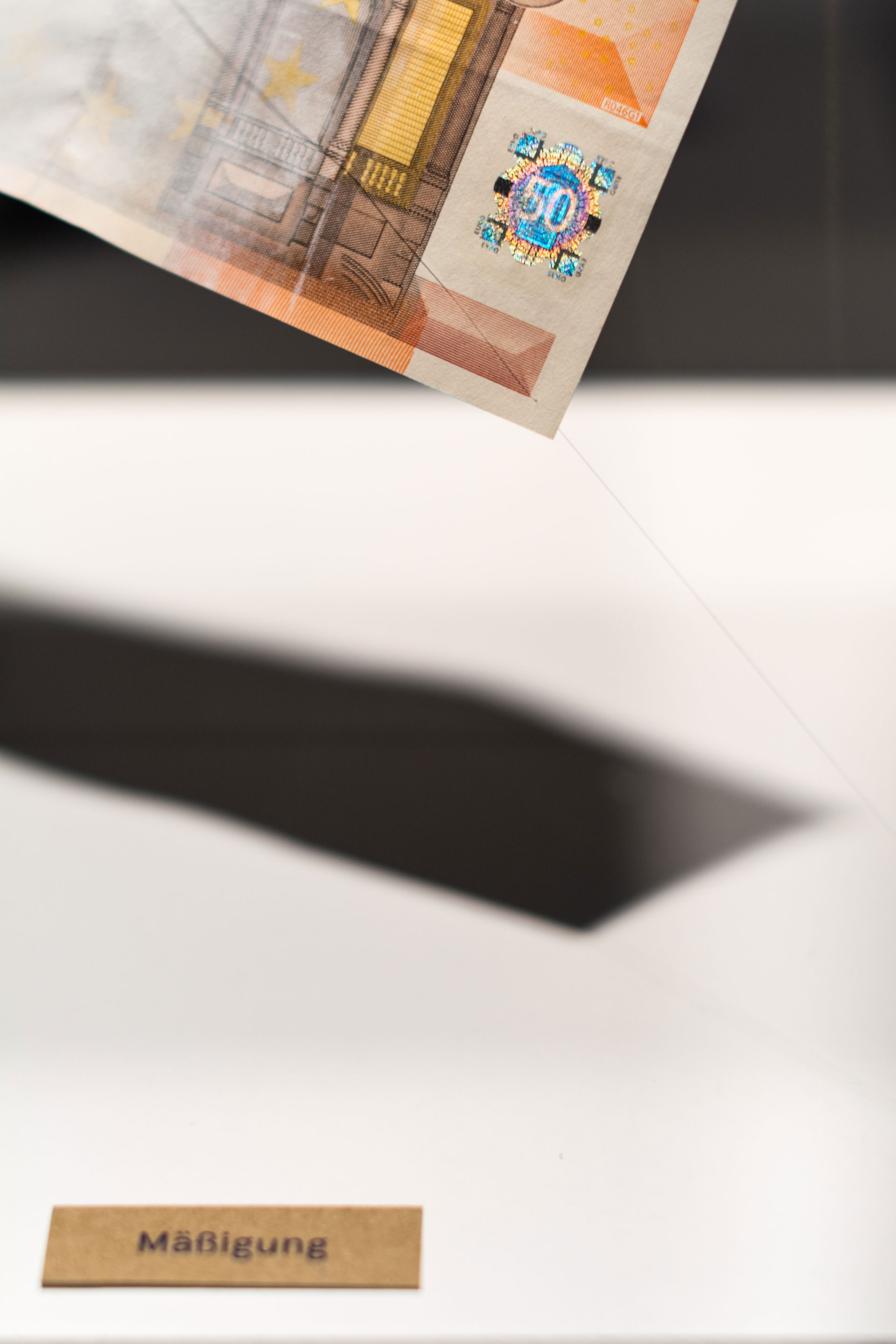
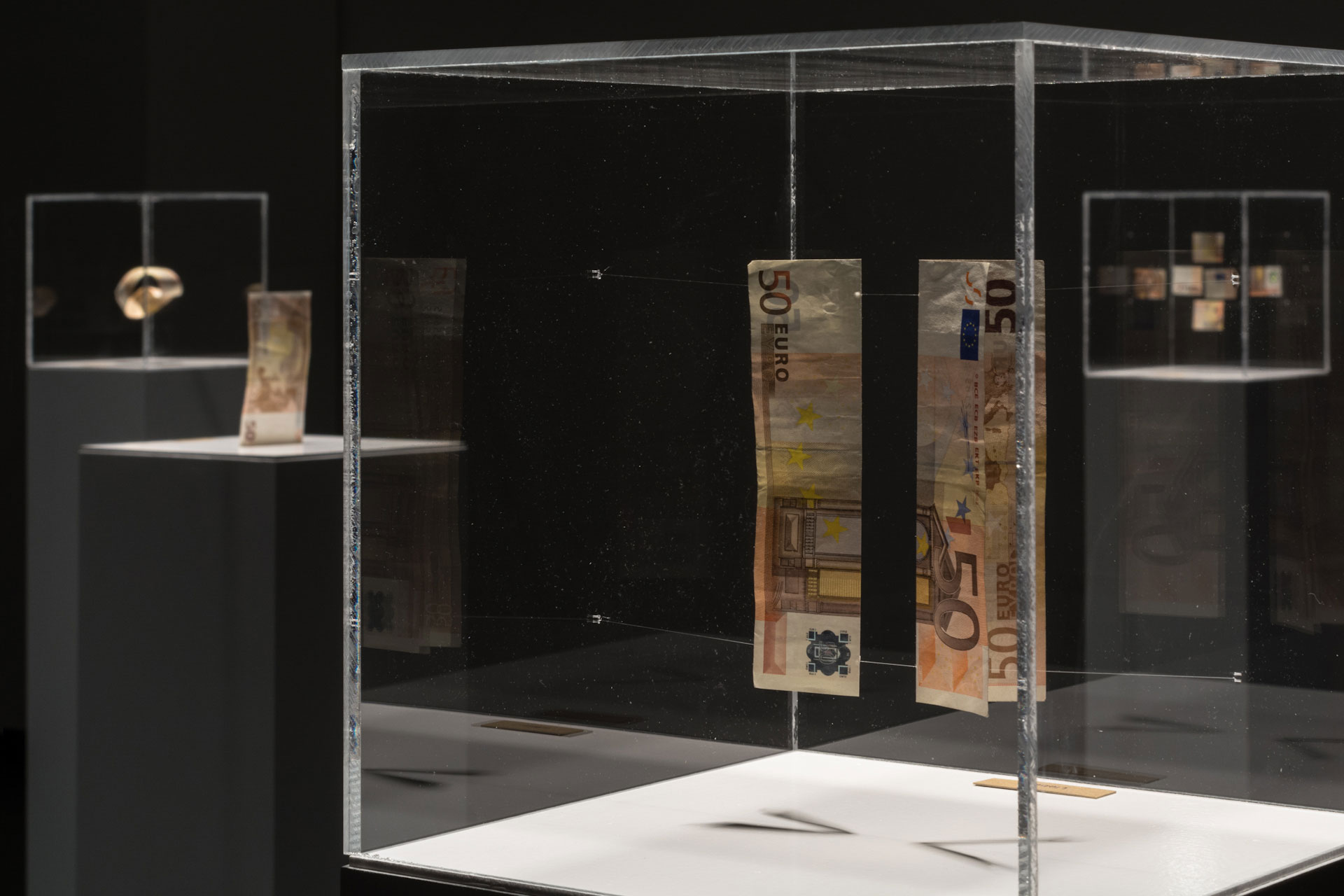

Mnemosyne
Ongoing project in cooperation with Knut Perseke, Thomas Fett & Christian Bromann, 2014/15 mnemosyne-app.de
featured at the Apps4EU
International Business Lounge, Manchester
With growing complexity archives are becoming more and more fascinating as well as difficult, referring their usability. Mnemosyne enables cultural institutions to open their digitised archives to the public by offering an intuitive and creative tool to discover forgotten treasuries of our cultural heritage. The interface emphasises the moment of browsing and shortens the way between the already known and the unexpected new. Participatory options allow to spread, discuss and recombine information. This let the archive become a generator of exchange and new ideas. Our aim is to build a bridge between cultural institutions, digital archives and "the user". The app blurs those boundaries by enlarging the exhibition space to webspace and connecting digital archives with current shows and debates in institutions. The user is the visitor is the user.
Mnemosyne came into existance during the cultural hackaton "coding da vinci" in 2014 in cooperation with Christian Bromann, Knut Perseke and Thomas Fett. It is an ongoing open-source project, supported by Open Knowledge Foundation, Wikimedia Germany and the German Digital Library(DDB). In februrary Mnemosyne is featured at the Apps4eu International Business Lounge in Manchester as part of the Future Everything Festival.
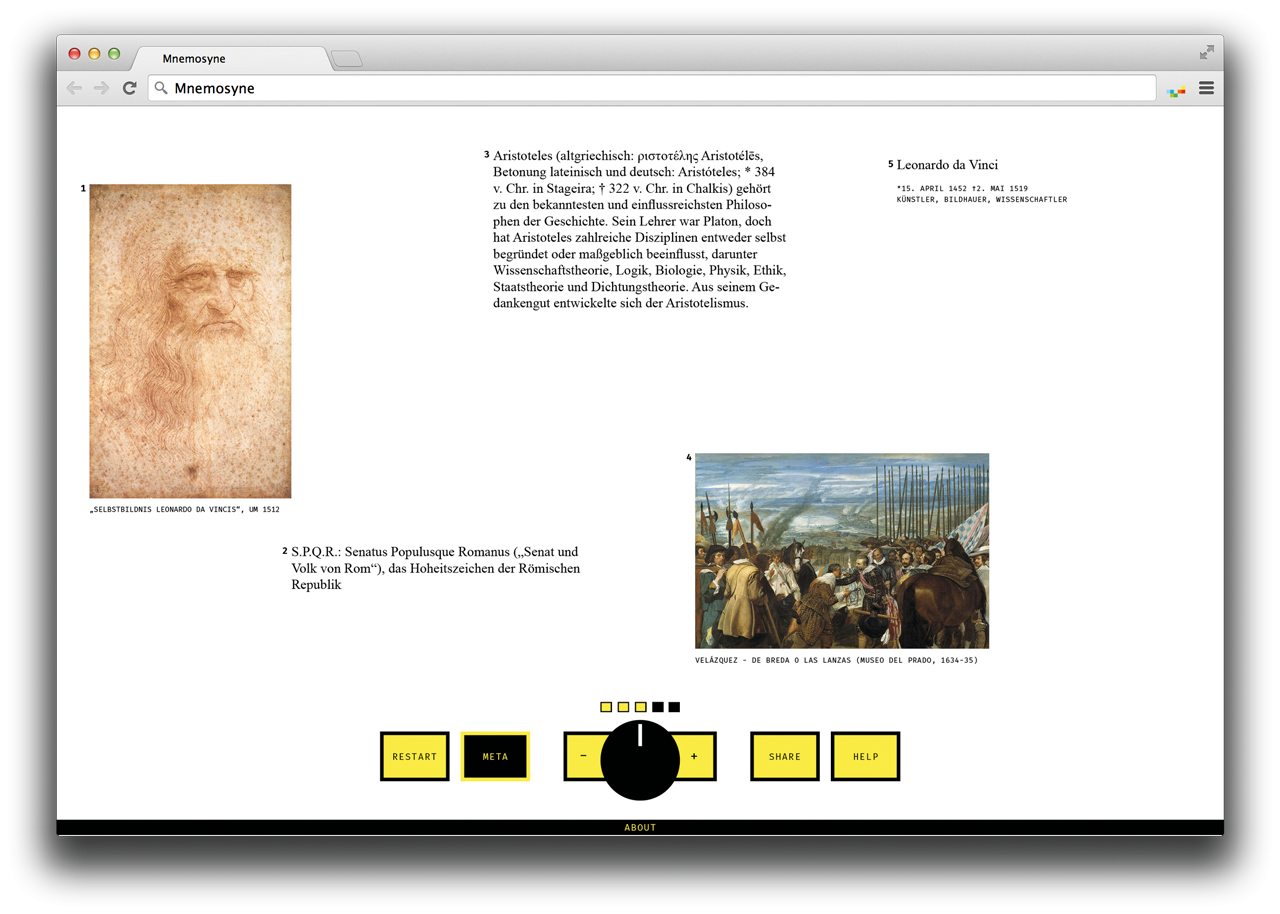

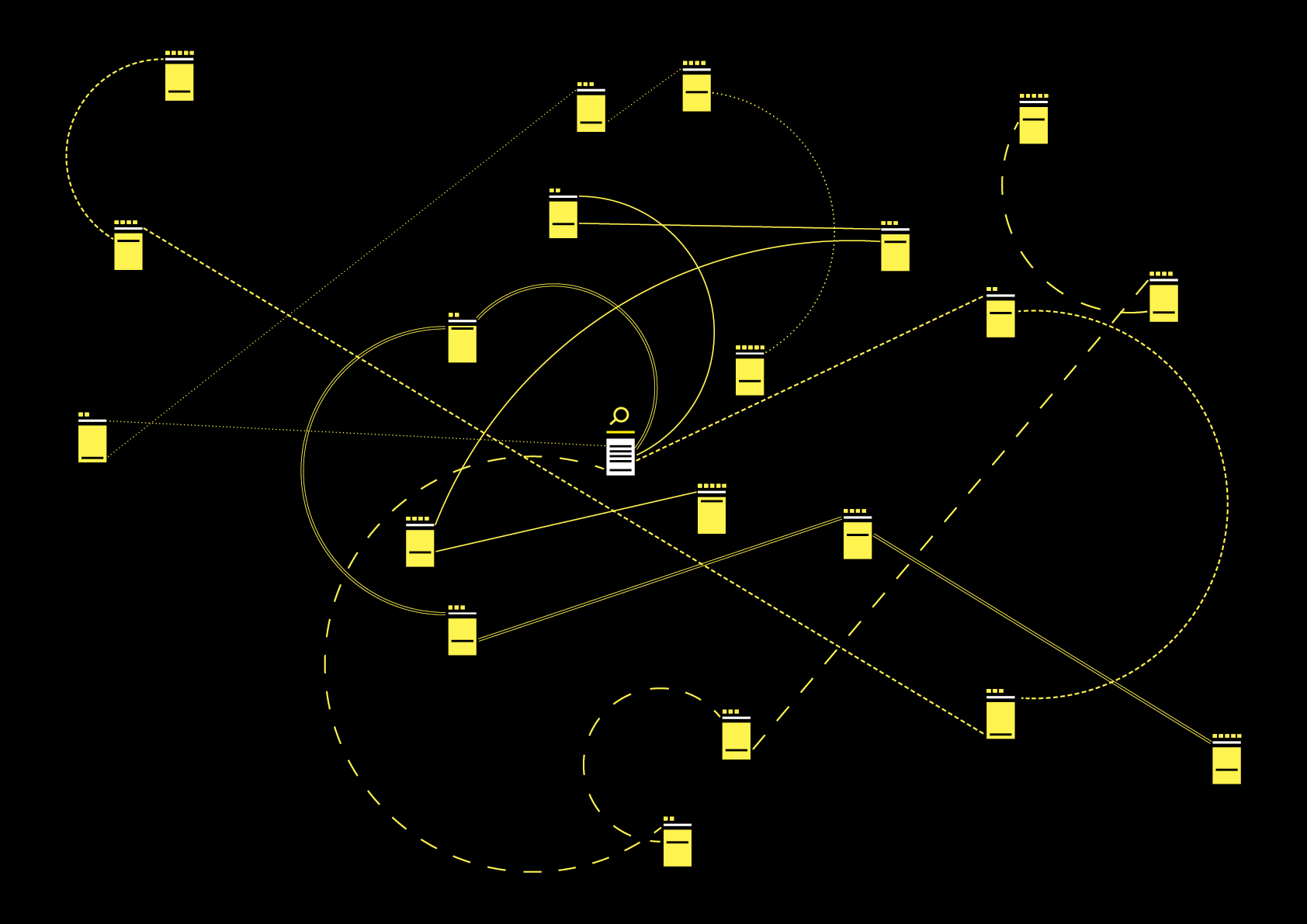
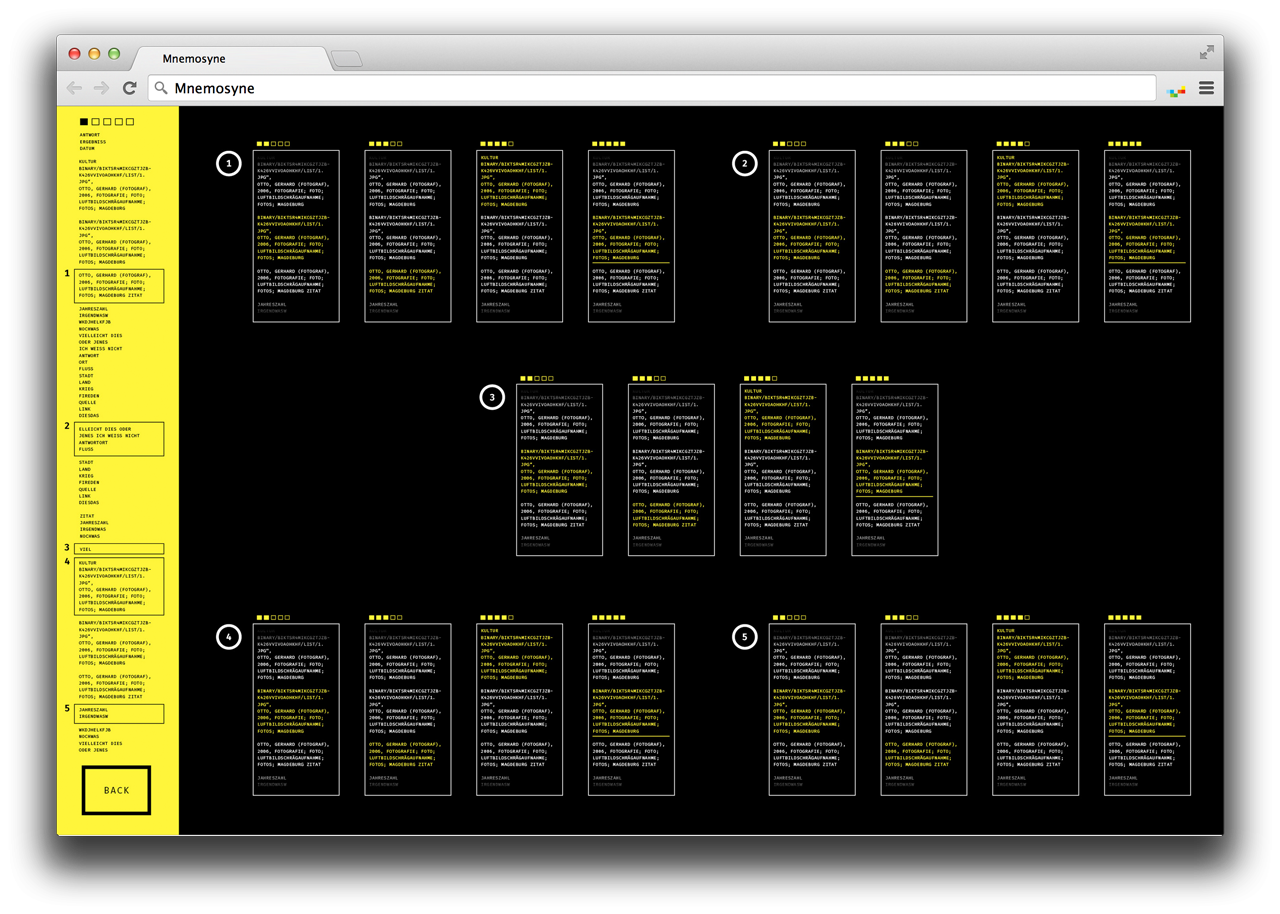
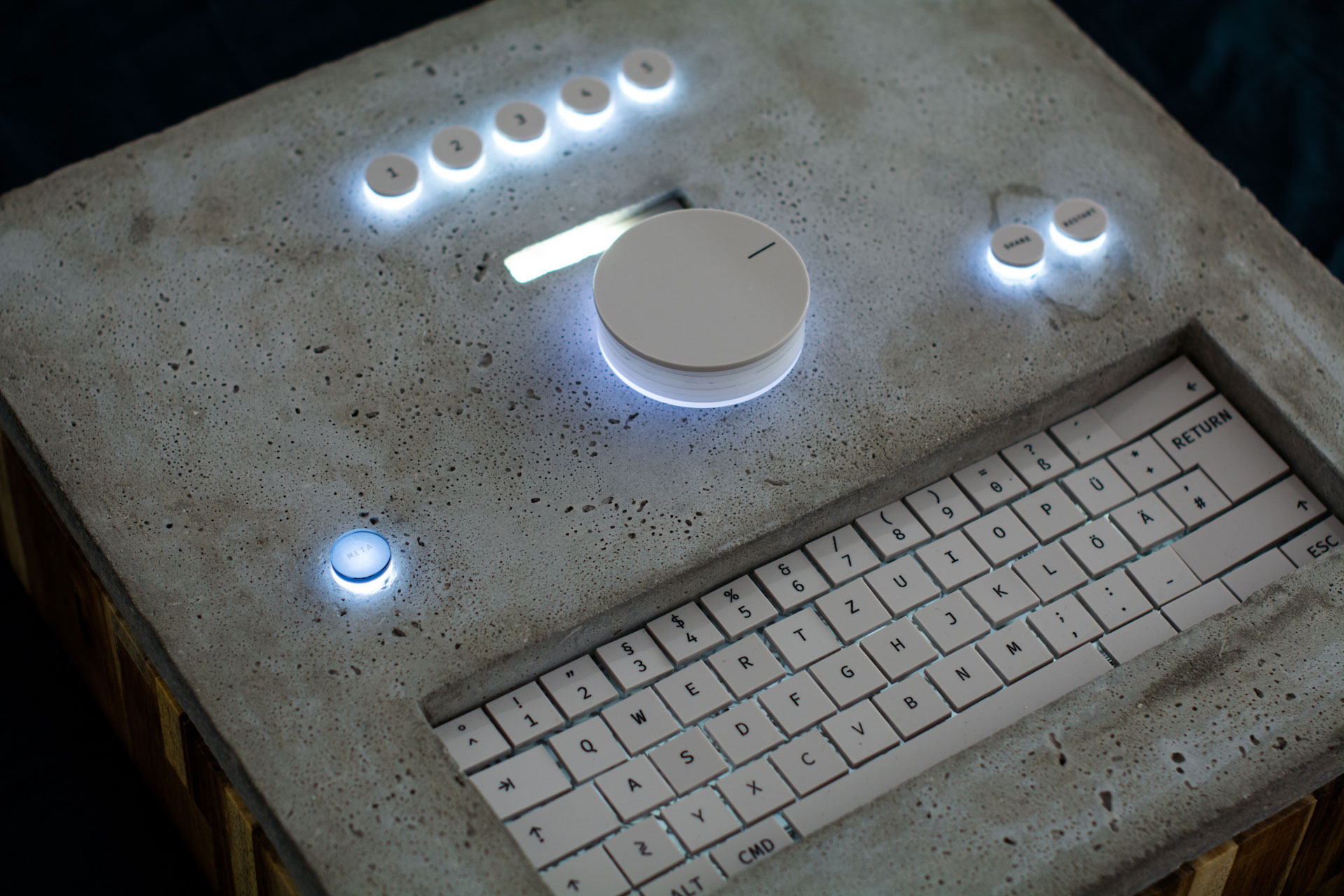
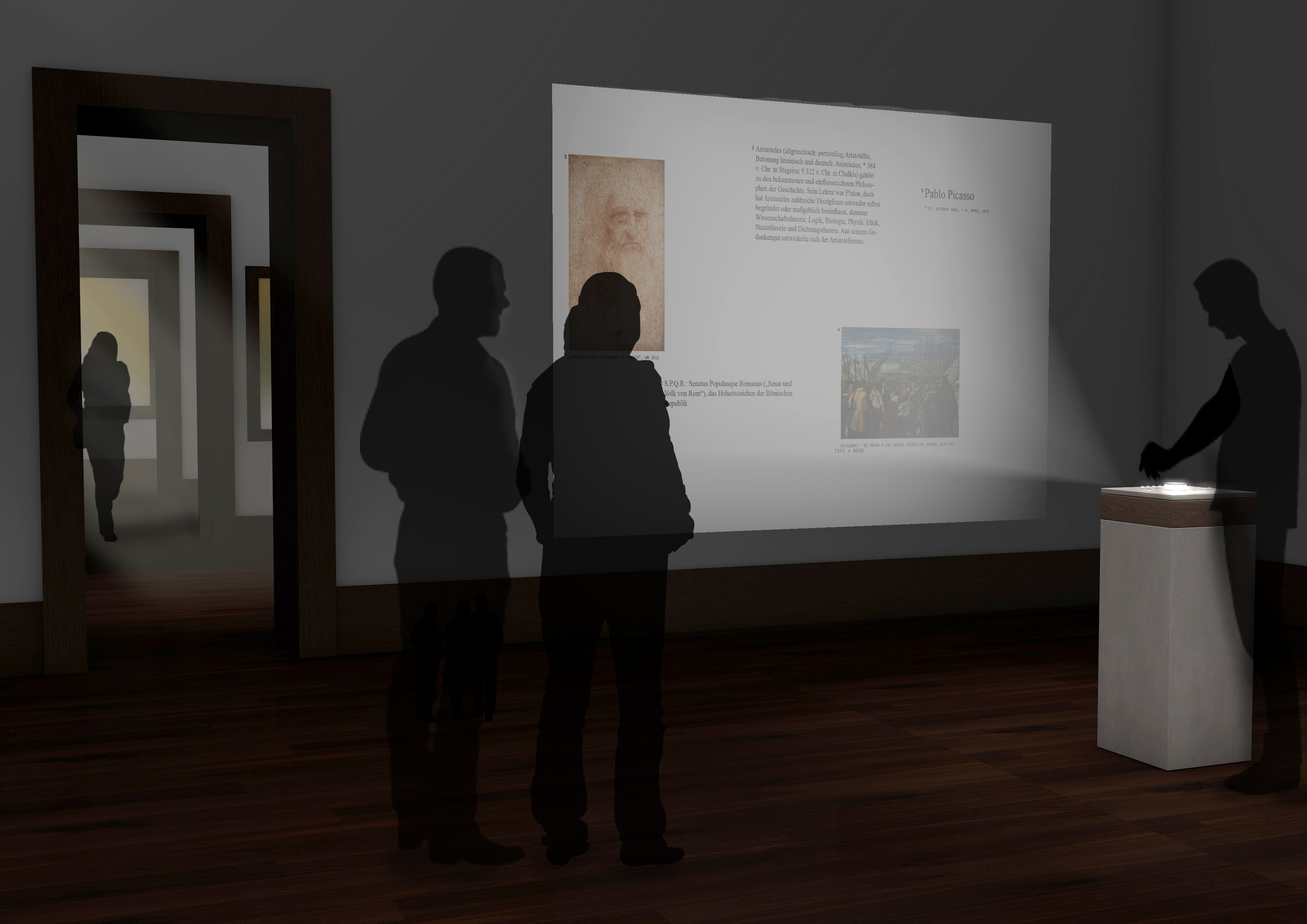
Dox.is
In cooperation with Martin Wecke, Robert Preusse and Dr. Marc Helbling, Wissenschaftszentrum Berlin für Sozialforschung
submitted at the arch plus competion "out of balance – critique of the present", 2013
Mass Media is reflecting discourses in society as well as beeing an active player. Dox.is examines linguistic patterns of the media regarding the topic of migration. The web app analyses online articles. The frequency of specific keywords expose repeatedly used motives within debates, while a sentiment analysis makes positive and negative moods visible. The interface presents the articles in different levels of iconicity. This additional tool offers the reader to recognize hidden coherences, opinions discriminating linguistic methods.
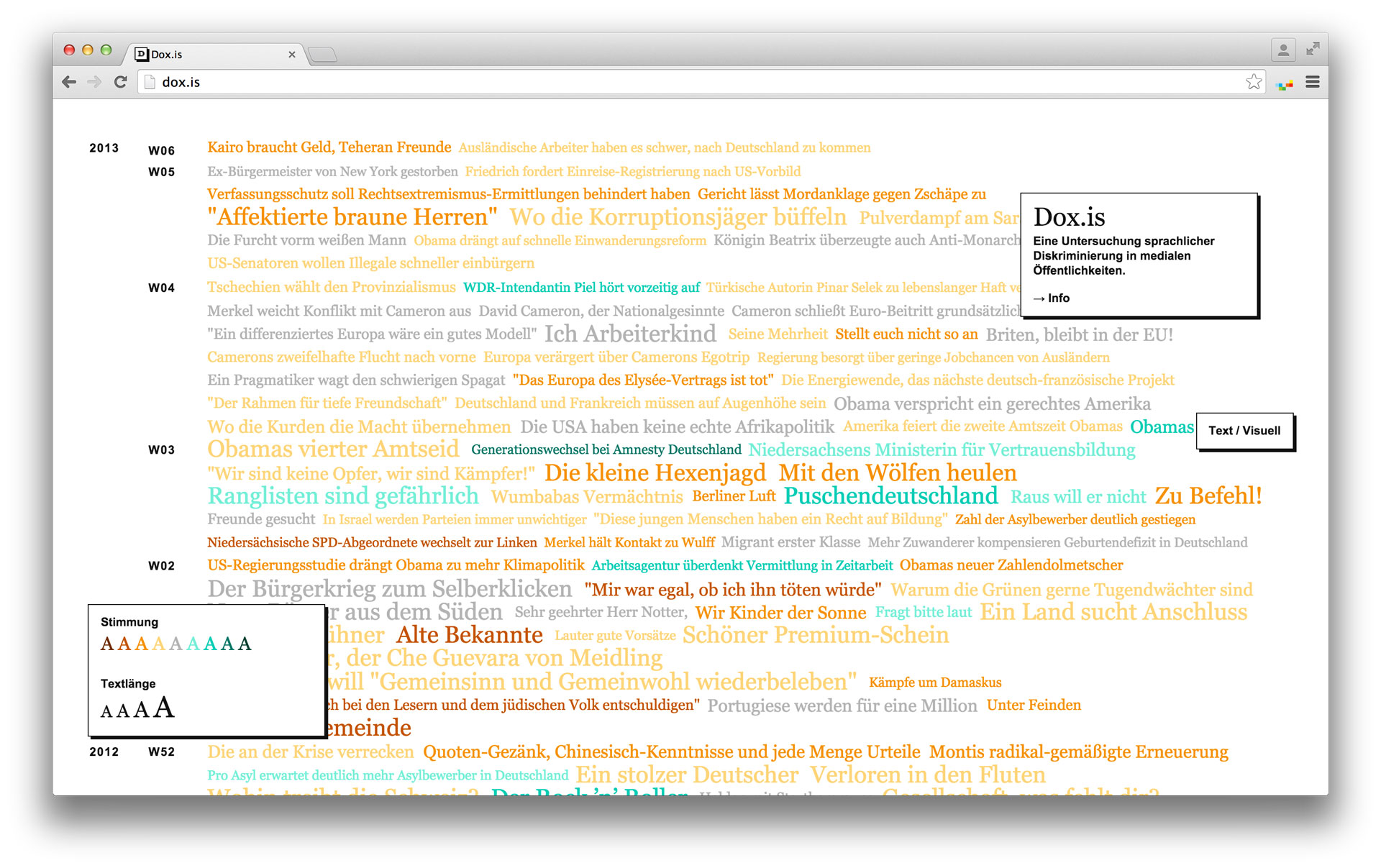
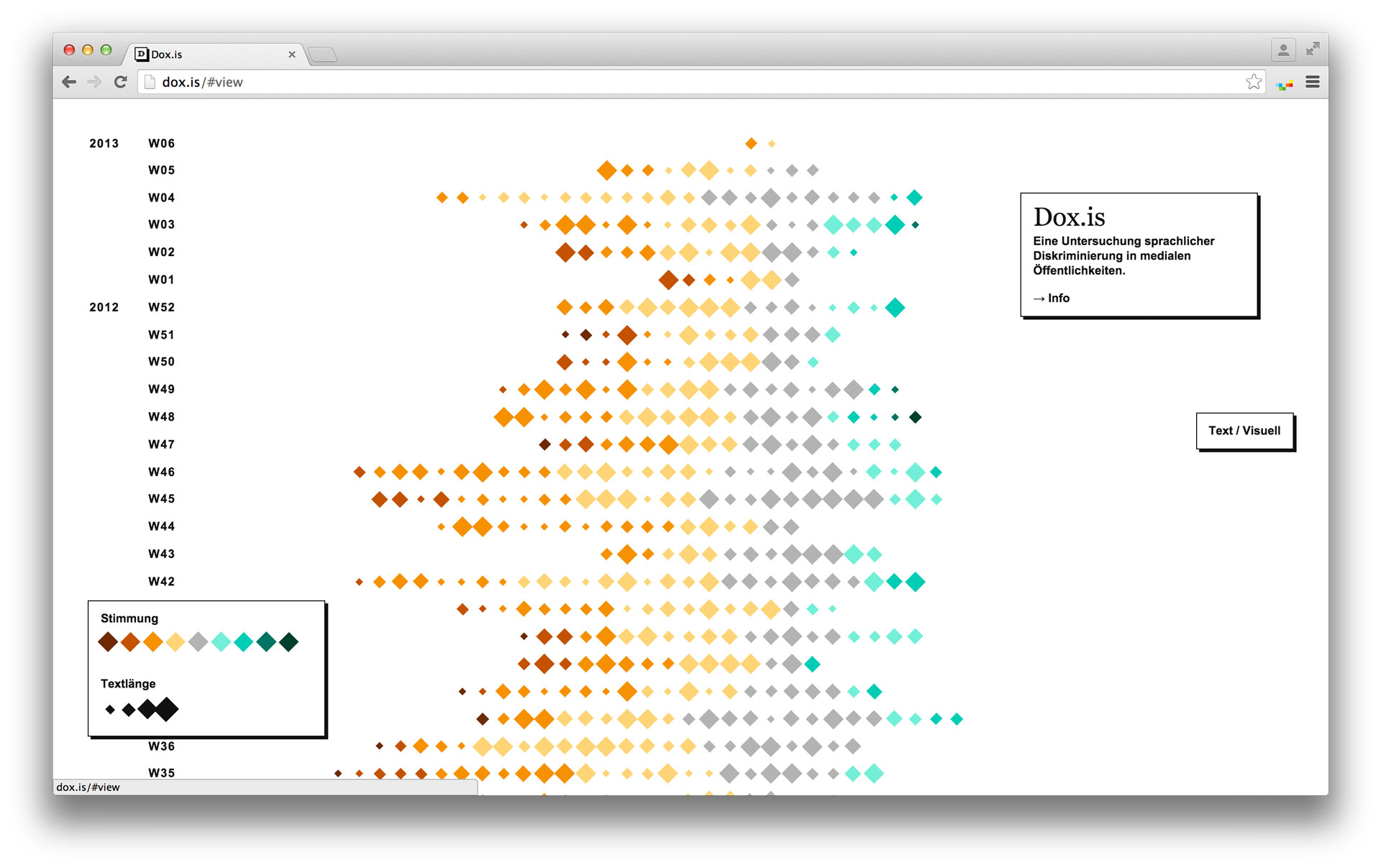
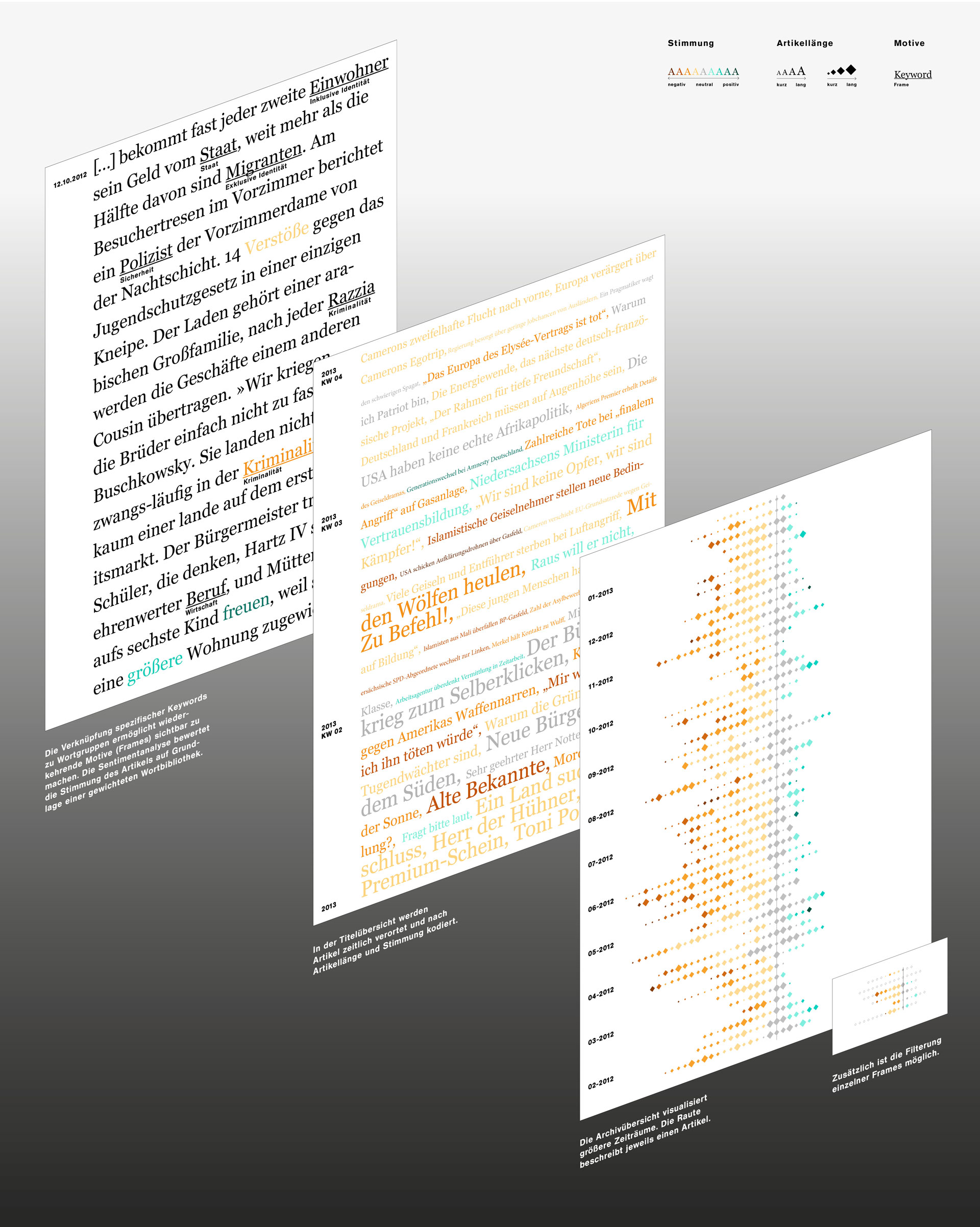
Spraycan
In cooperation with Christian Bromann, 2013
exhibited at the following events:
Postdigital is better* at Design Transfer UdK, Berlin
Long night of the libraries 2013, Berlin
Long nights of sciences 2014, Berlin
Spraycan is an participatory installation, enabling the "user" to leave digital marks throughout urban spaces. Wandering through the city via "google street view" the writes spots a place he wants to spray, grabs the a can and does it. The can emulates the method of an real spray paint can using light-tracking technology instead of real color. The written piece is documented and immediately available online.
The project is originated at the semester course "postdigital is better", aiming to explore the influence of the virtual on the physical space, especially in graffiti in street art. During several exhibitions we observed that spraycan easily attracts kids to start working creatively. Thats how the idea occures to reconfigure the installation, giving kids the possibility to manipulate artworks. This could be an interesting an easy approach to art.
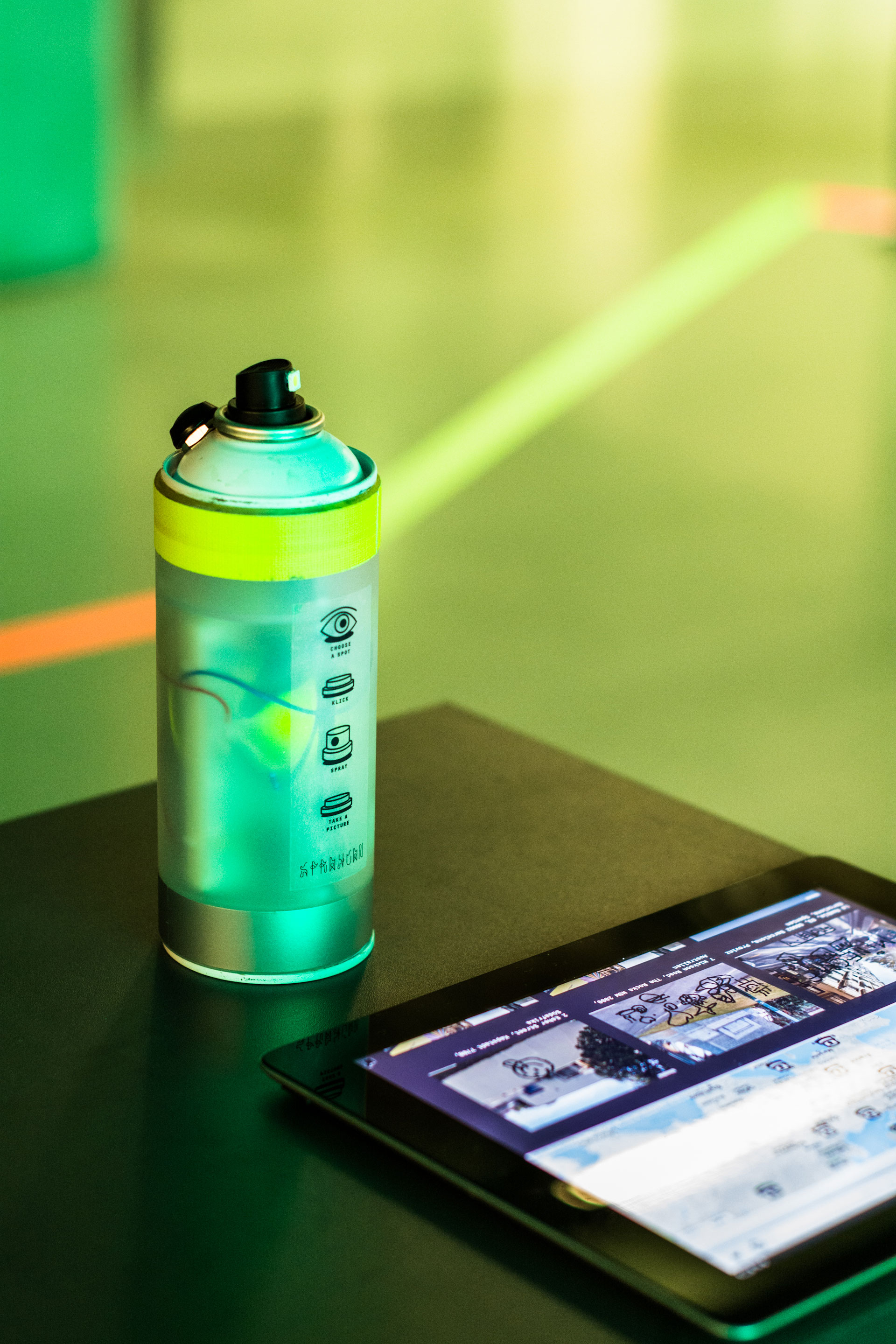
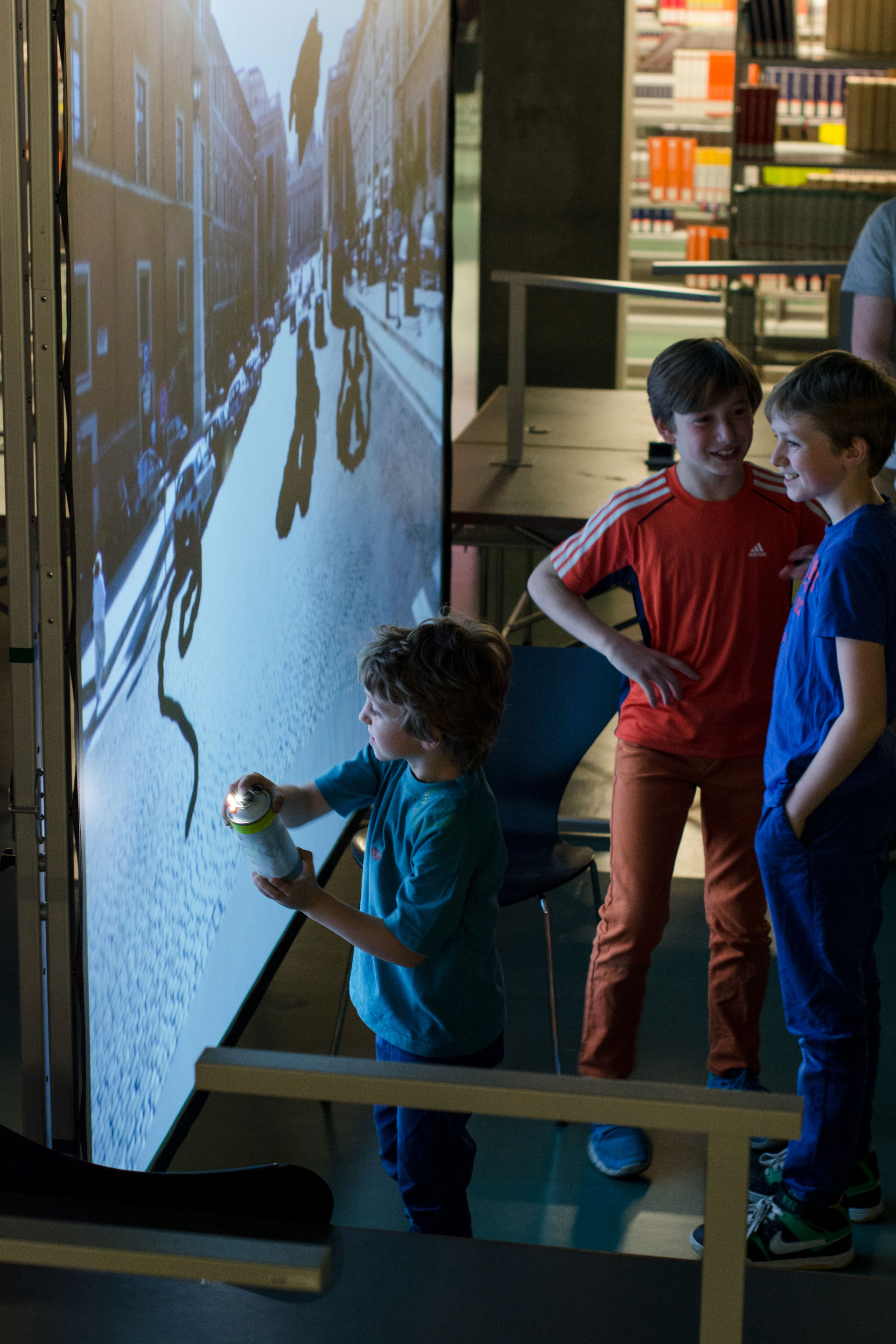
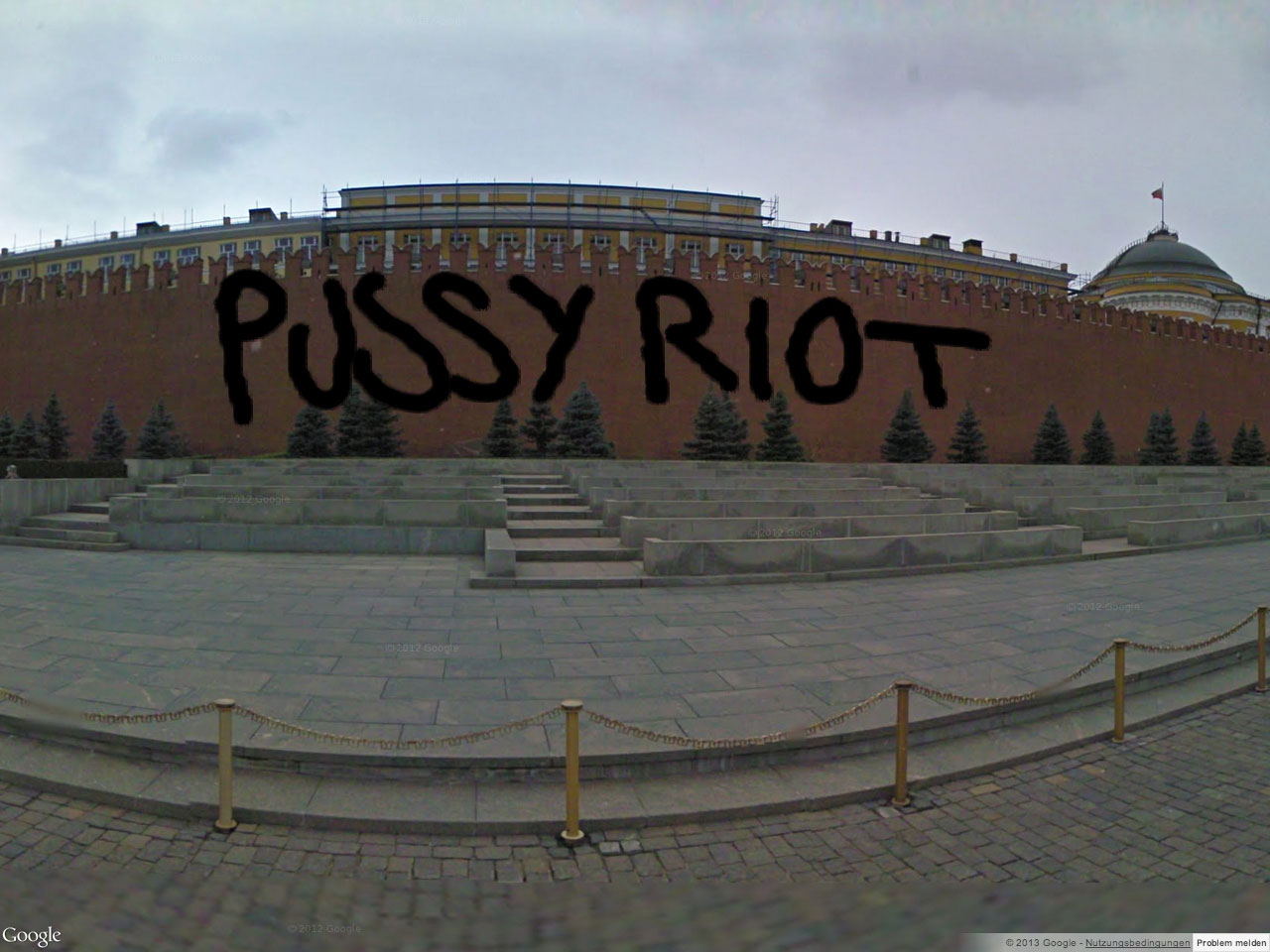
eigenart #83
In cooperation with Robert Preusse &
Tobias Reisch
eigenart #83, published Juli 2013, edition: 2500 Download PDF: 2.5 Mb
AStA student magazine of the University of the Arts Berlin
the student magazine of the Berlin university of the arts, published by the General Student Council, is an independent and experimental forum, stitching together all faculties. The issue "Ping pong" is a motography, a visible zick-zack movement of ideas, techniques, equalities and opposites. The seesaw can be understood as an field of energy which is hold in balance by two opposite forces. Breaking out in different directions the field of energy find its visualization by random values influencing design decisions. Using Basil.js typographic values like leading and kerning were generated randomly. This playful experiment induce a balance of powers, a movement through the pages.
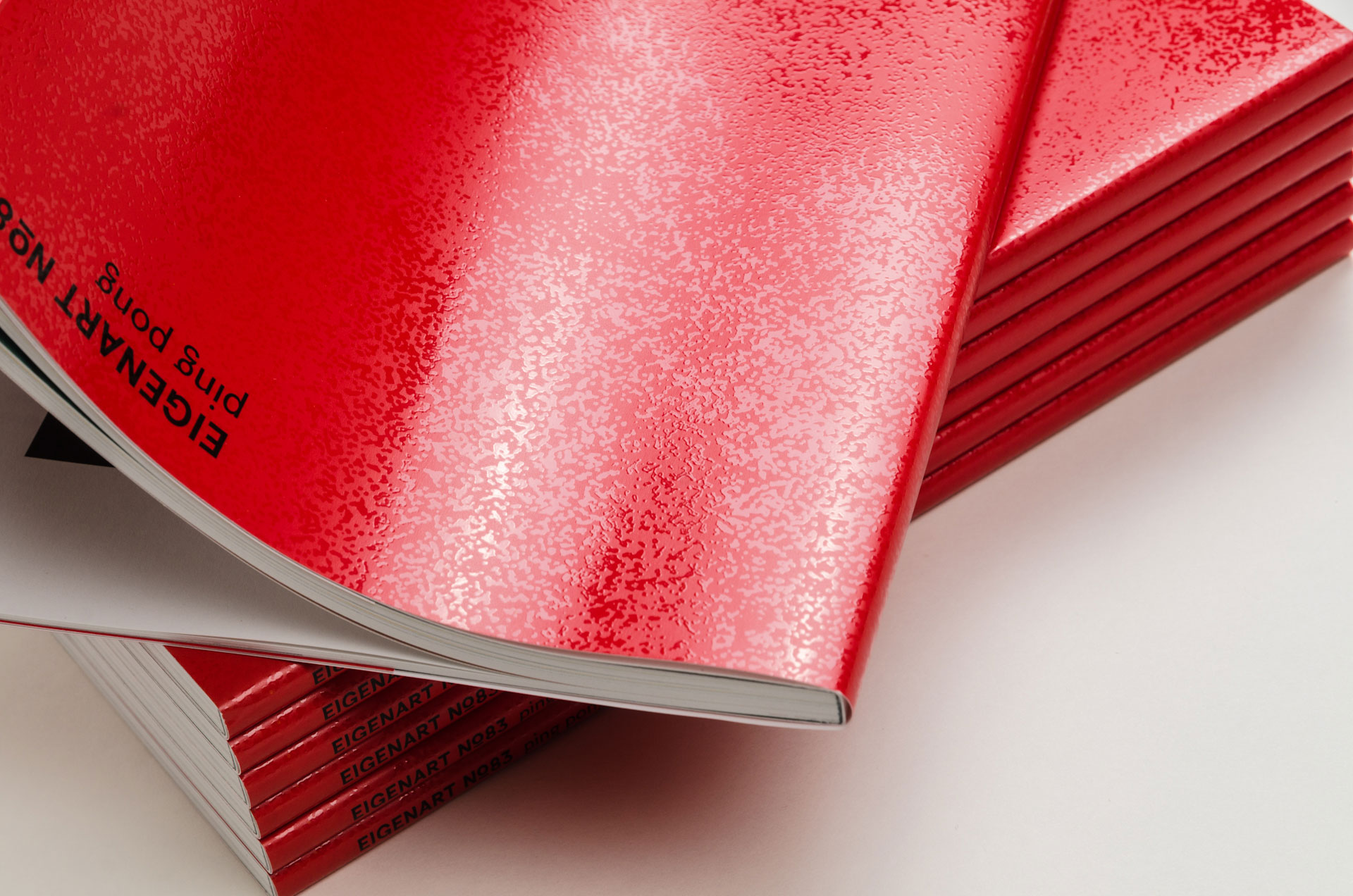
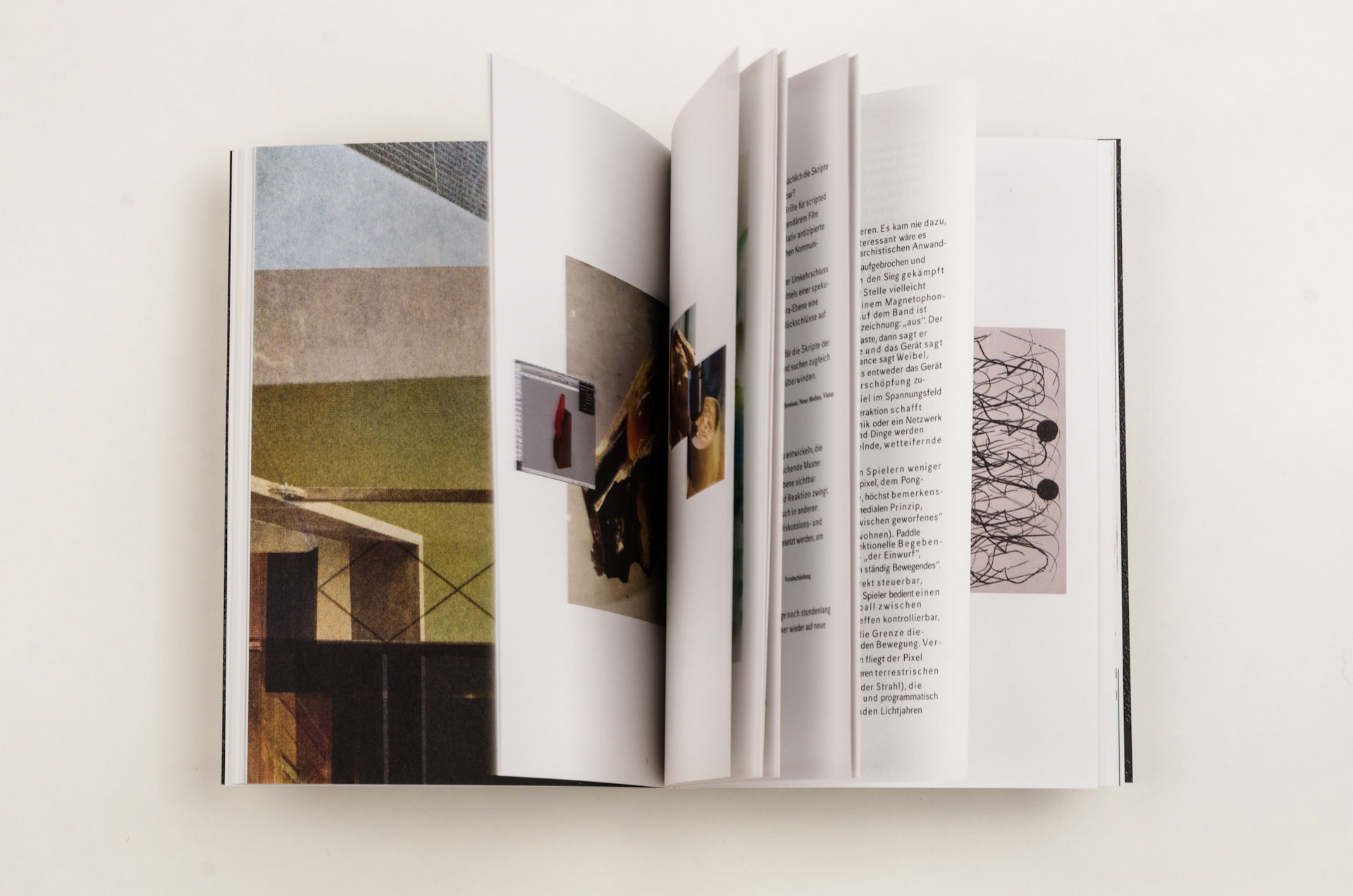
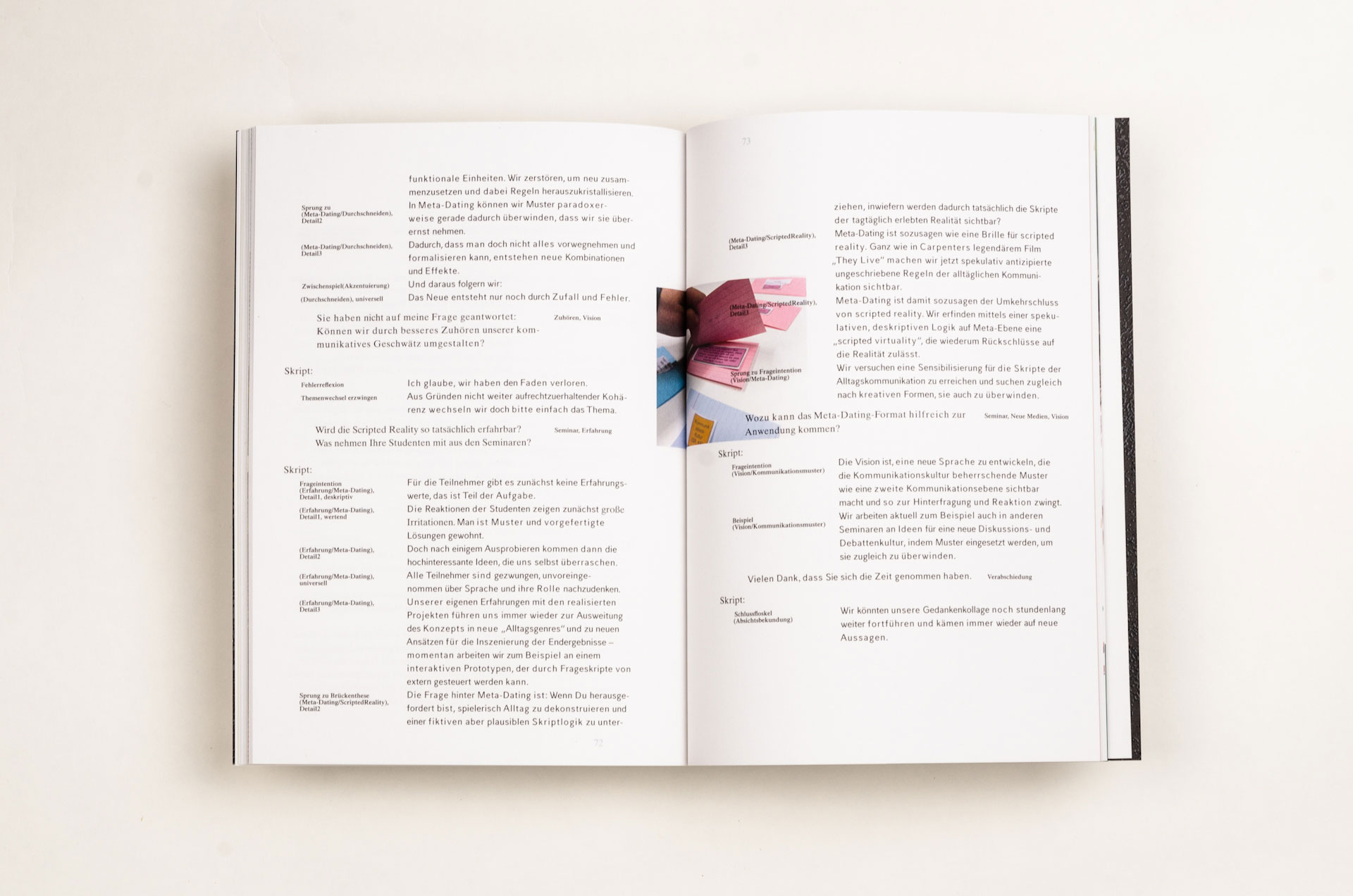

Eigenart #83 is the third issue of the cooperation with Tobias Reisch and Robert Preusse. In the previous issues we were engaged with Soup (#82) and likeness (#81).
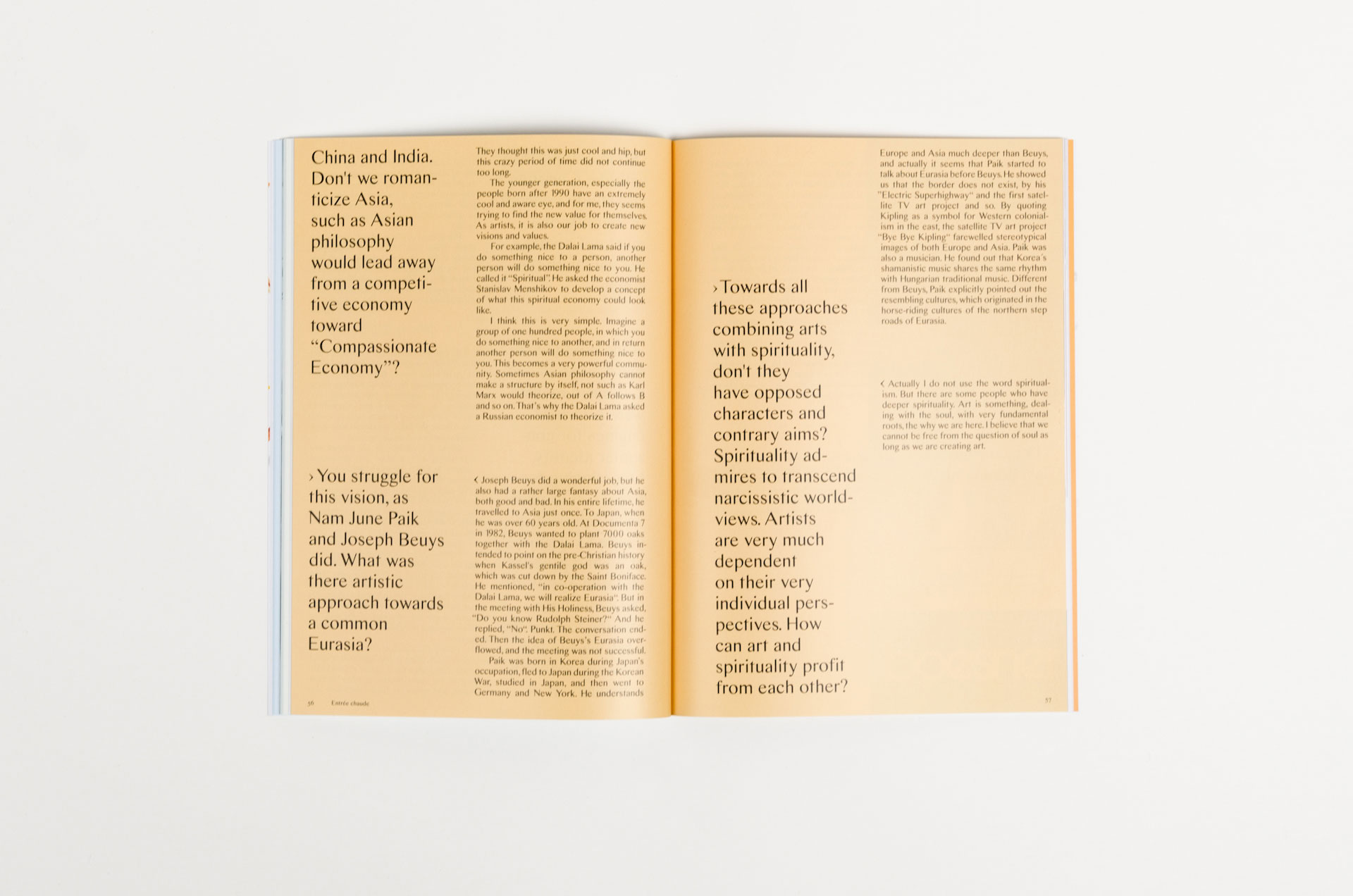
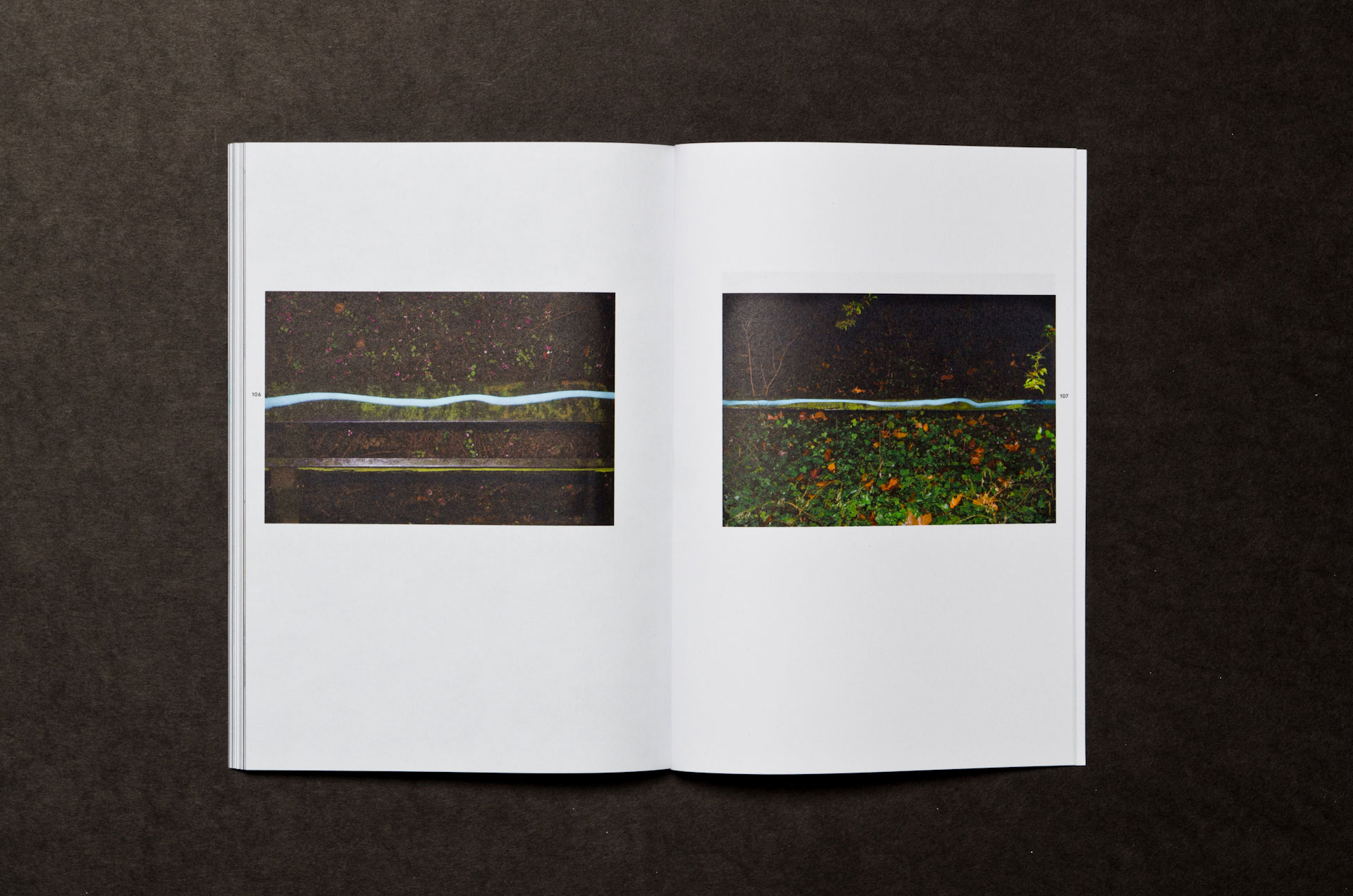
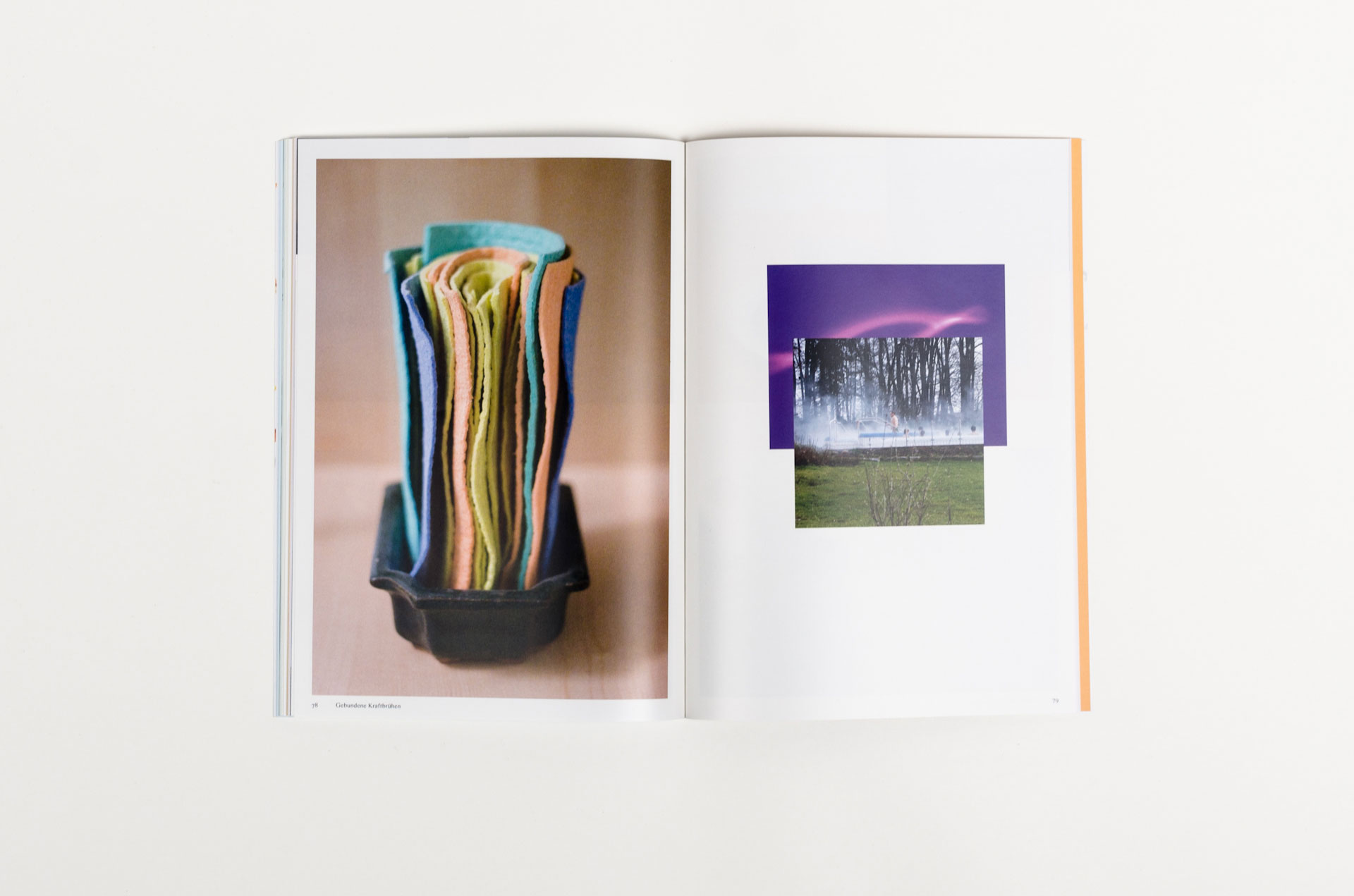
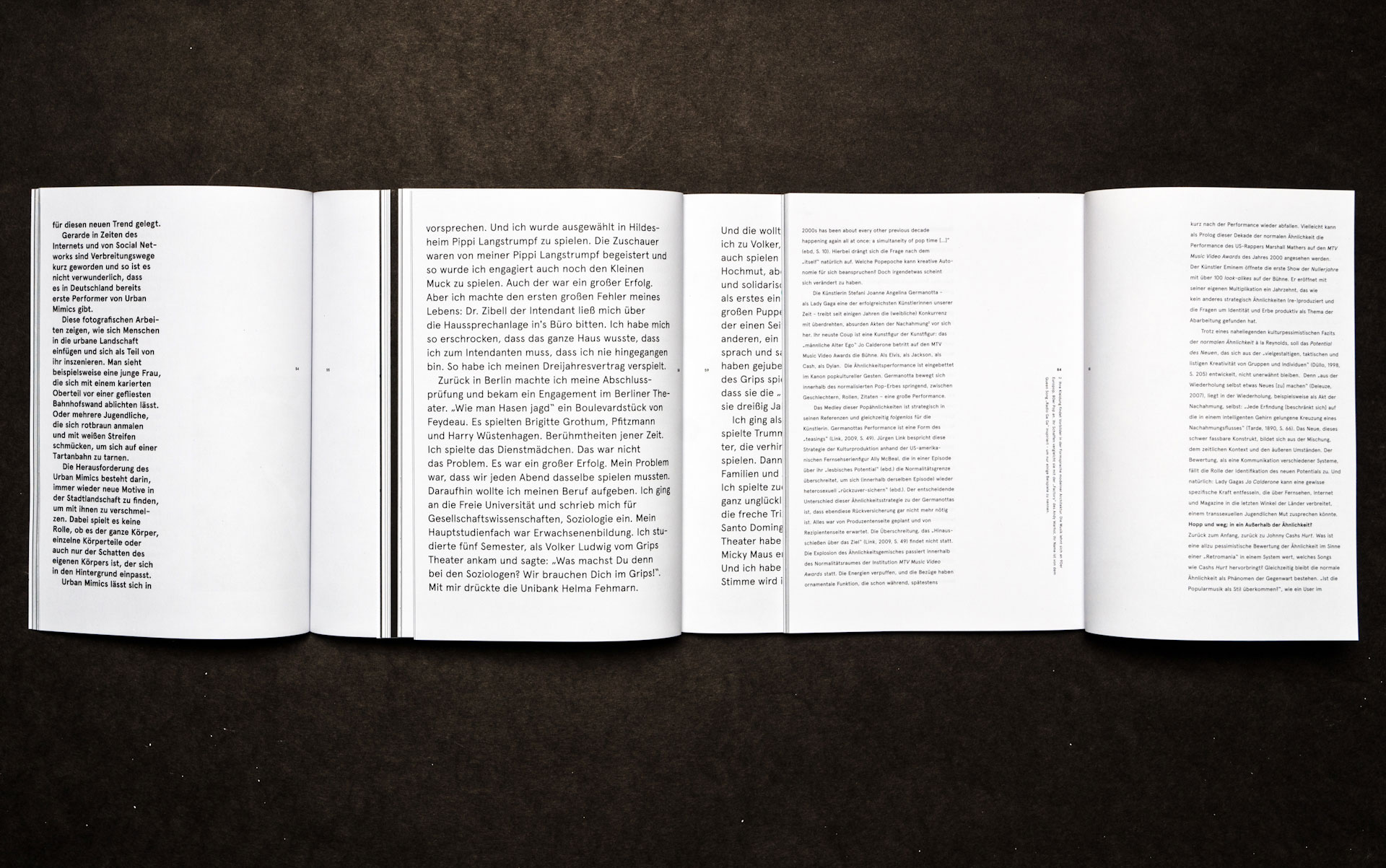

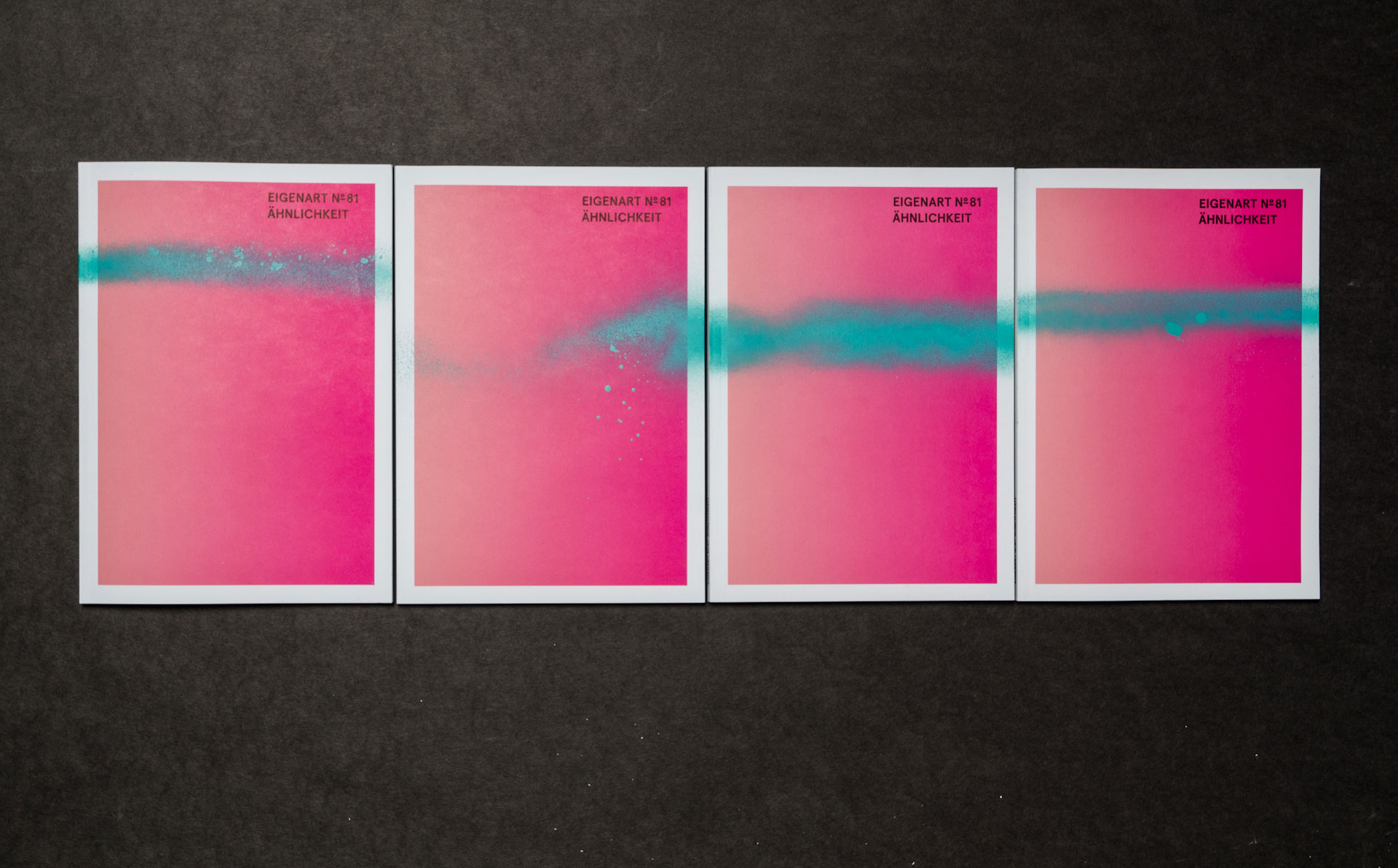
Genealogy of Mediathinking
Ongoing project, layouted in cooperation with Stefanie Rau & Robert Preusse
Edited by Daniel Irrgang & Clemens Jahn, University of the Arts Berlin, 2013
ISBN: 978-3-89462-242-8
The book is a continuing series of conversations about the developments within the academic and artistic discourses of media thinking held by Prof. Dr. Siegfried Zielinski and his guests at the Berlin University of the Arts. It also features contributions of students and other thinkers.
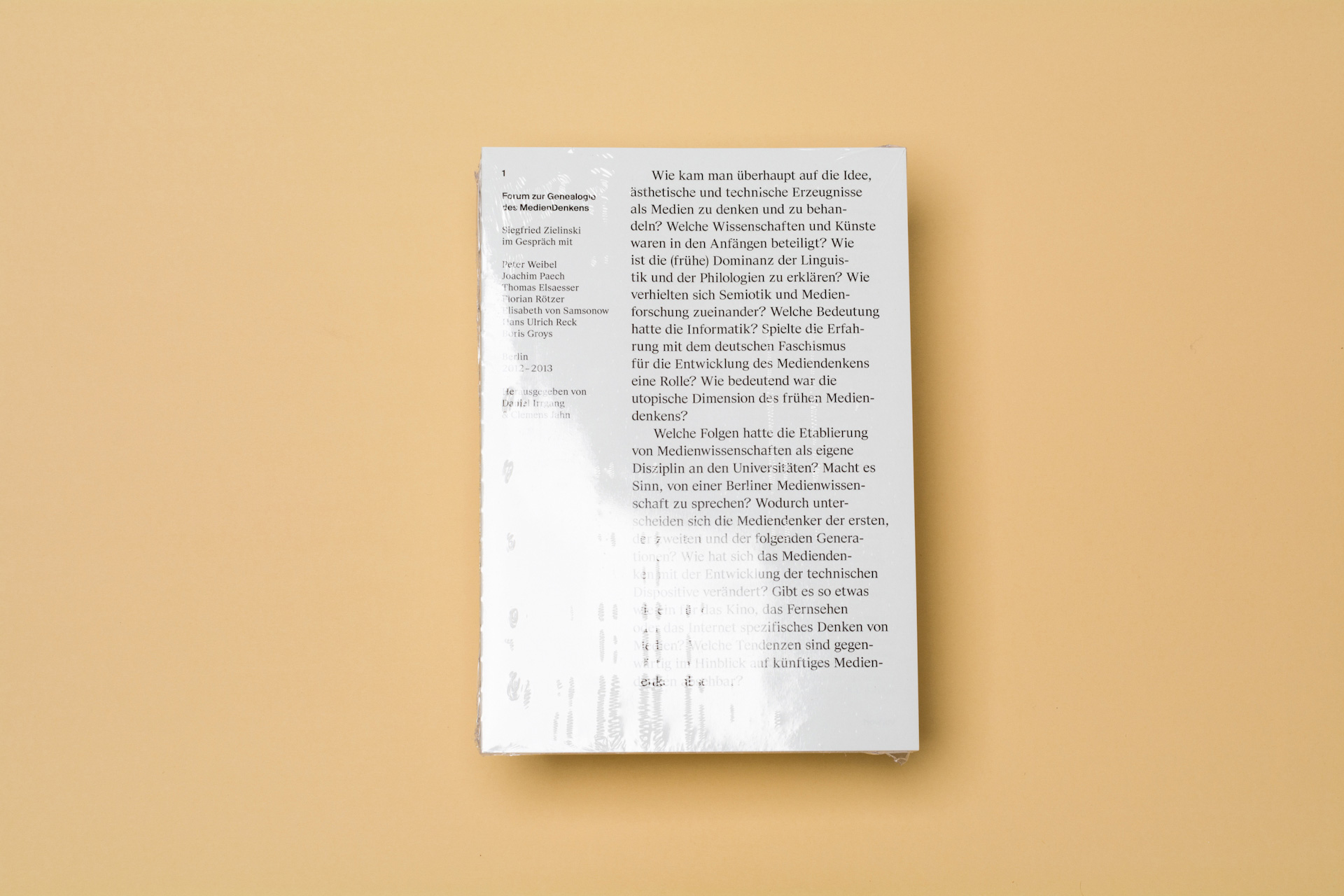
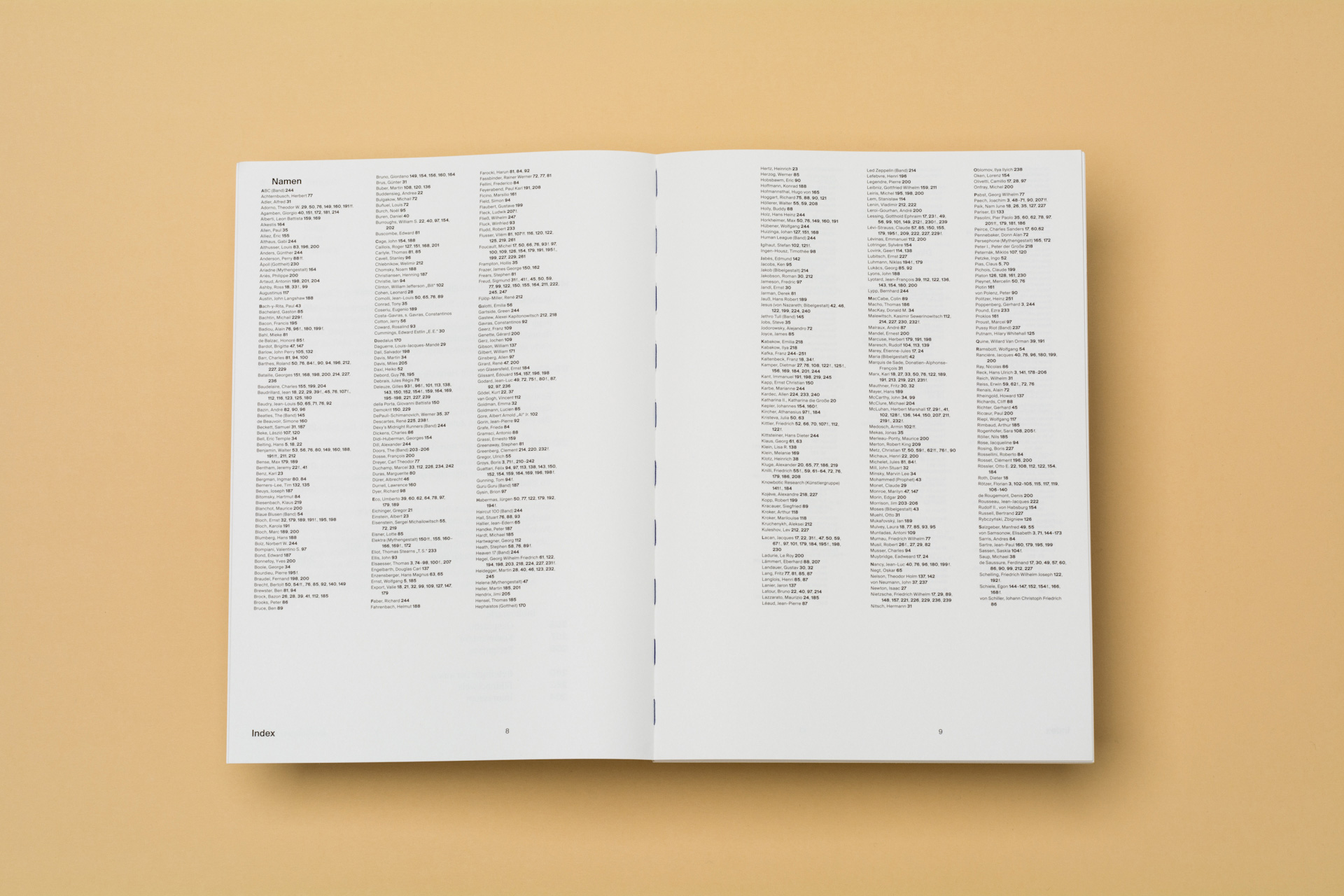
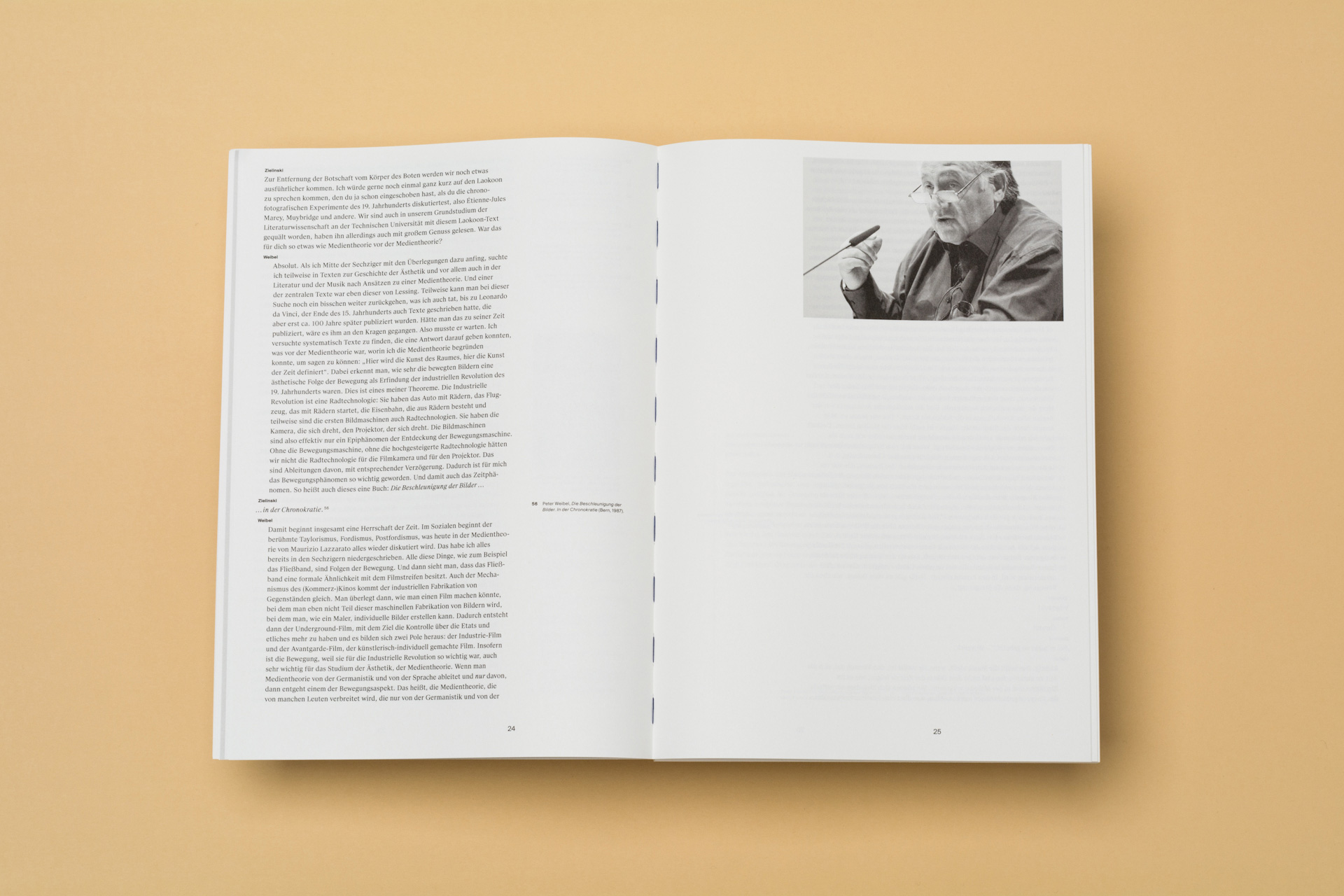

periodical "grund_schule kunst bildung"
In cooperation with Robert Preusse
grund_schule kunst bildung, Volume 2
Athena Verlag, 2013,
ISBN: 978-3-89896-557-6
grundschulekunstbildung.de
(Programing: Olaf Spaarmann)
"grund_schule kunst bildung" is the department of teacher training in fine arts for the primary school under the direction of Prof. Dr. Kirsten Winderlich at the Berlin University of the Arts. We designed the website and the first volume of a periodic publication. The topic of "place and space" is understood and portrayed in its multiplicities of perspectives. Through randomly generated and colored squares each cover becomes a new and unique composition. The second publication deals with "material". We stick to our method of randomly generated covers by re-materializing the articles pictures.
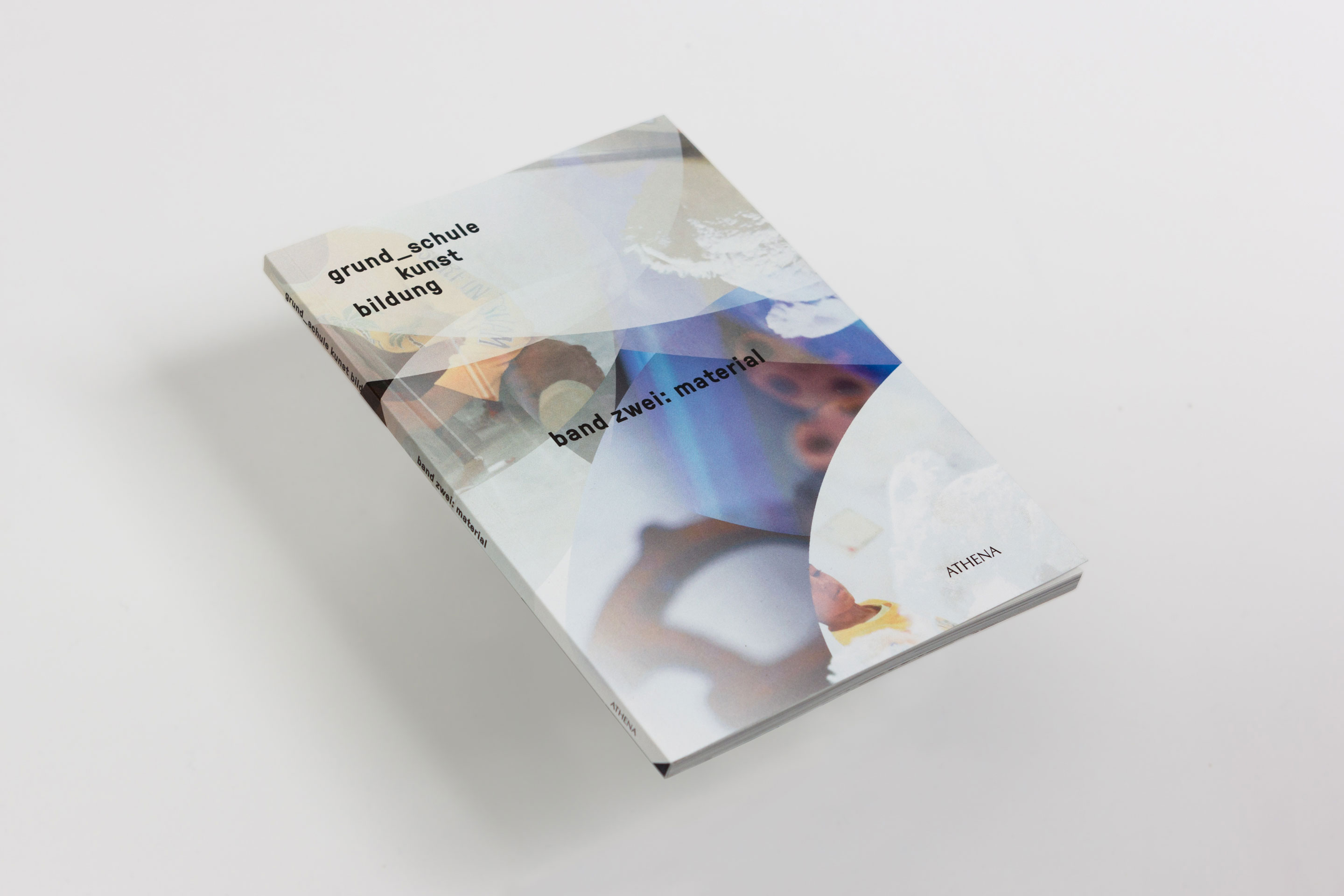
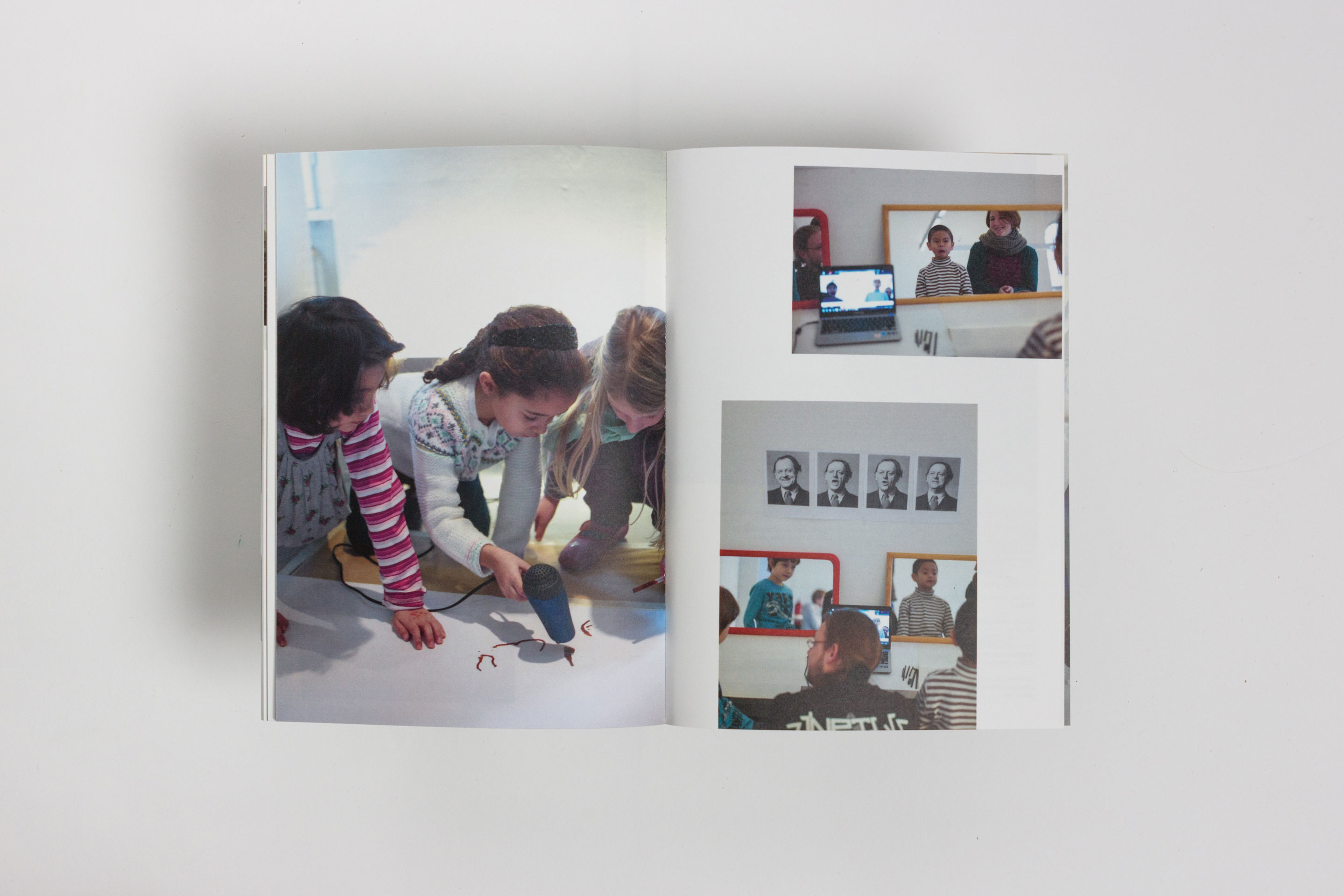
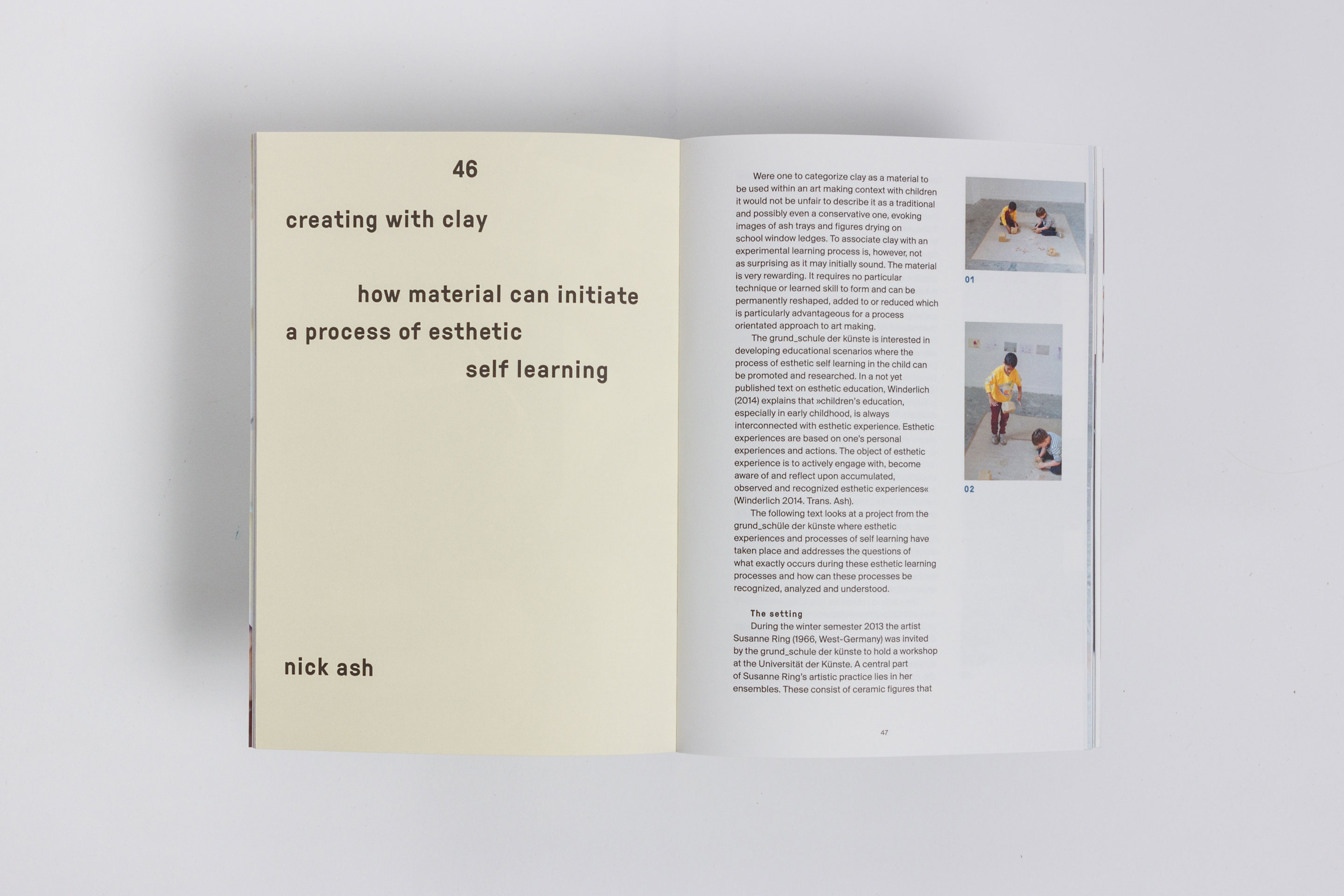
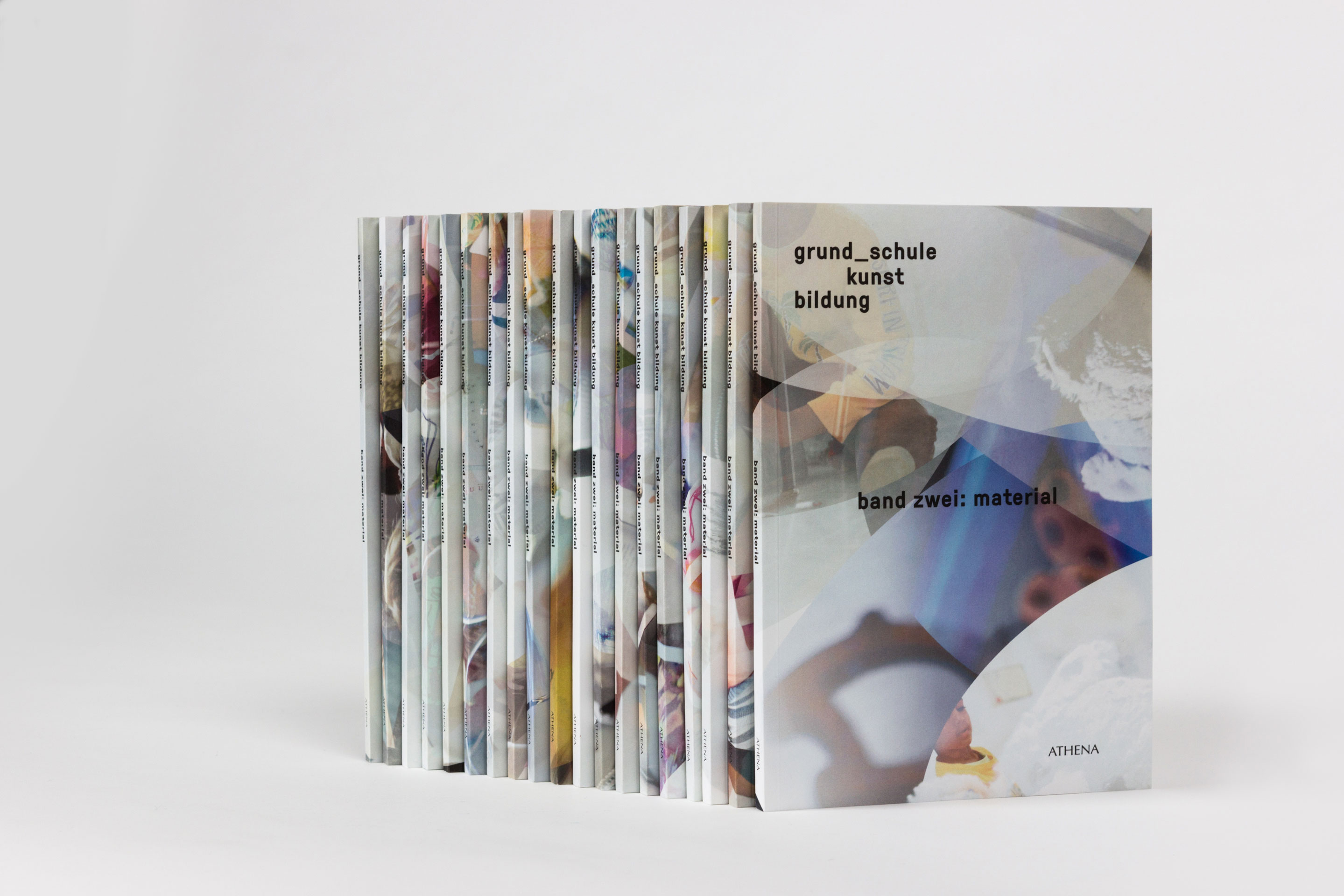
Volume 1 –place & space
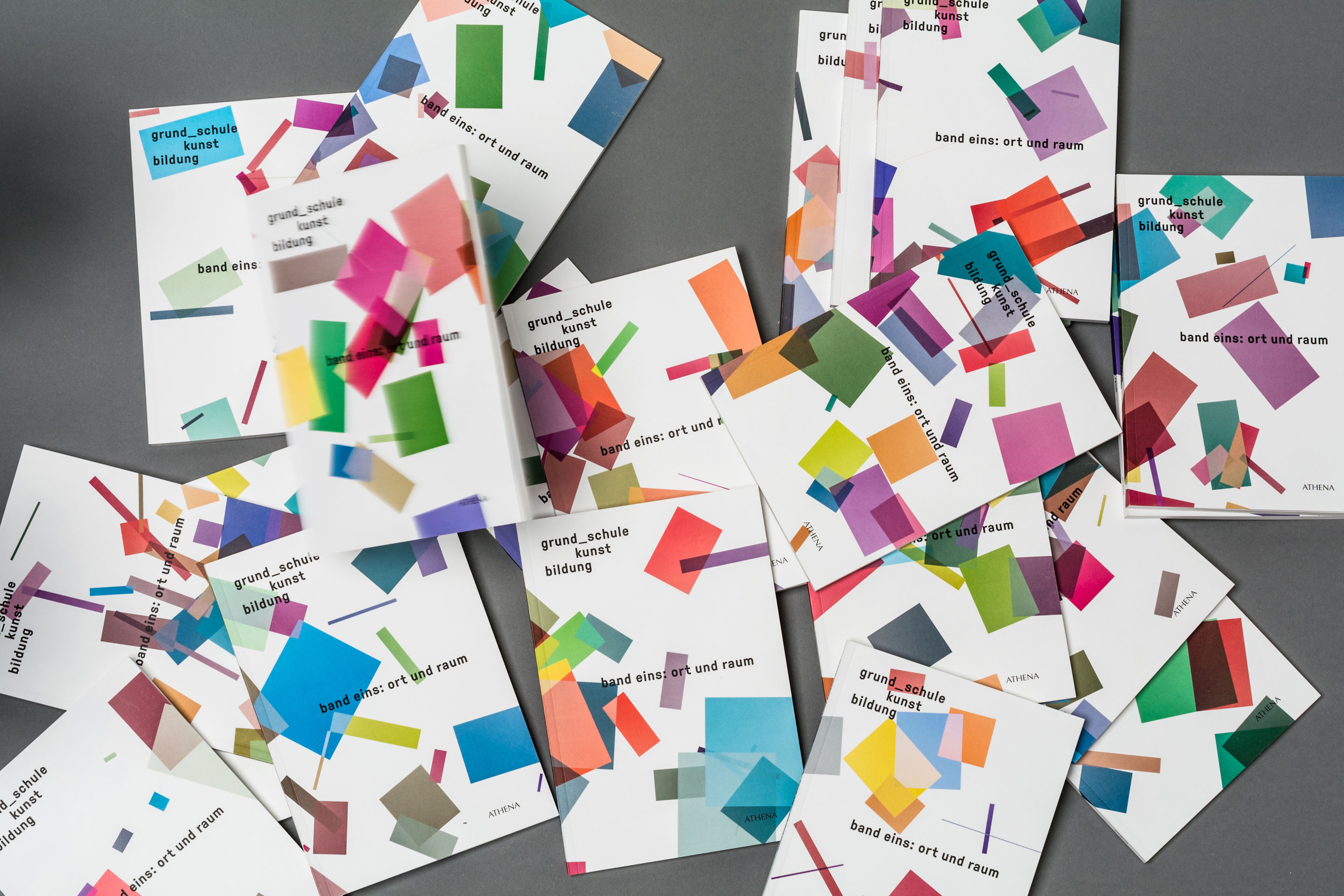
Graffiti – education and living
Klötze, Saxony-Anhalt, 2014
In autumn 2014 I got the chance zu paint a huge wall at an apartment building in a residential area (Plattenbausiedlung) of my hometown. The building is situated next to a primary school and other educational institutions. For this reason I was asked to work on the topic of education and "home". That is how a very colorful und detailed painting came into living. The arrangement of divers ideas and short stories enables the viewer to build different narratives. It expands the idea to a broader perception of life. Furthermore it is a critique of an education policy that aims to inject pupil with pre-fabricated units of knowledge to produce business conformal machines. The painting is a plea of the importance of wandering of the beaten track, the dreaming and the abidance.
